The Perfect Balance of Form and Function
Review Summary
The Lian-Li O11D Mini V2 is a smart and sleek upgrade to an already popular case, now with better airflow, support for bigger components, and smarter cable management in a compact design. It keeps the signature frameless glass look while improving thermal performance, making it a great pick for PC builders who want style without sacrificing function. The Flow version, which includes five optimized fans, delivers even more value for just $10 extra. With features like a slanted fan tray, modular I/O, and support for vertical GPUs, this case punches way above its size and price.
Hours Tested: 3 Days

Overall
-
Design - 9.5/10
9.5/10
-
Features - 9.8/10
9.8/10
-
Build Quality - 9.5/10
9.5/10
-
Value - 9.5/10
9.5/10
-
Cooling Performance - 9.5/10
9.5/10
Pros
- Compact Dual-Chamber Case
- ATX PSU Support
- I/O Can Be Moved
- GPU Anti-Sag For Vertical and Horizontal Without Any Extra Accessory
- Ease of Cable Management, 7 Velcro Straps
- Incredible Cooling Performance
- High Quality Dust Filters on Top, Side, Bottom
- Accessory Storage Box
- High Quality Fans
- Removable Storage Cages
- Main Tempered Glass Does Not Fall
Cons
- O11-D Mini V2 (Without 5 Fan) Costs $10 Less
When it comes to computer chassis, it’s hard not to talk about the Lian-Li. Their Dynamic Series and XL were so popular when they were launched. What if they offer an equivalent level of modularity and functionality in a smaller package, and a lot cheaper than those significant cases? Lian Li O11 Dynamic Mini enters the chat here.
Lian Li has made noteworthy changes to its original design of the Dynamic Mini. The Mini V2 version is slightly larger by just 2 liters and can now support ATX PSUs and ATX and BTF motherboards. This case also offers a 10-degree slanted fan tray at the bottom, which could improve the thermals for the graphics cards and provide more cable routing space for a tidy and clean aesthetic.
Key Takeaways
- The Lian-Li O11D Mini V2 Flow is a compact, premium-looking PC case that offers great airflow, clean aesthetics, and support for full-sized components, all while staying budget-friendly.
- You should buy the Lian-Li O11D Mini V2 Flow if you want a compact but powerful case that can handle full-sized components and looks stunning with its sleek glass design and visible RGB airflow.
- You should skip the Lian-Li O11D Mini V2 Flow if you’re building an ultra-compact PC and need something smaller than a mini-tower.
Let’s go over the key specs of the chassis:
Note: Lian-Li has two models for their O11D Mini V2 Series, one is called “flow,” which has two side (reverse) blade fans and three (reverse) blade fans at the bottom. These fans are said to be optimized for the intake airflow. The other simple variant has no fans. Lian Li O11D Mini V2 is available in two colors: white and black.
Packaging
Lian Li O11 D Dynamic Mini V2 Flow comes in the cardboard packaging with the illustration of the chassis on the front side of the box.
The back side of the package tells you about the measurements and overall dimensions of the cabinet. After unboxing the case, two sturdy foams hold the case firmly, with the plastic bag protecting the case from scratches.
Accessories
The accessories are nicely packed in the plastic container, which includes a pack of screws, combs, zip-ties, and washers. You also get the vertical mounting frame and the paper manual.
Closer Look Outside
Now we will go over the exterior first.
Design
The design is very similar to the O11D, but 12mm (0.4 inch) tall, slightly wider in depth, which makes room for the bigger motherboards, thicker radiators, and bigger power supplies.
The case features two tempered glass panels on the front and the side. There is no corner pillar in this case that provides a better view inside. The black model features slightly dark-tinted tempered glass, while the white version offers clear glass for better aesthetics when the lightings are combined.
The I/O ports are located at the bottom side of the chassis, which can be removed and installed on the top side of the case with just two screws. The I/O has USB 3.0 x2, USB 3.2 Type-C x1, Audio x1, Power Button x1.
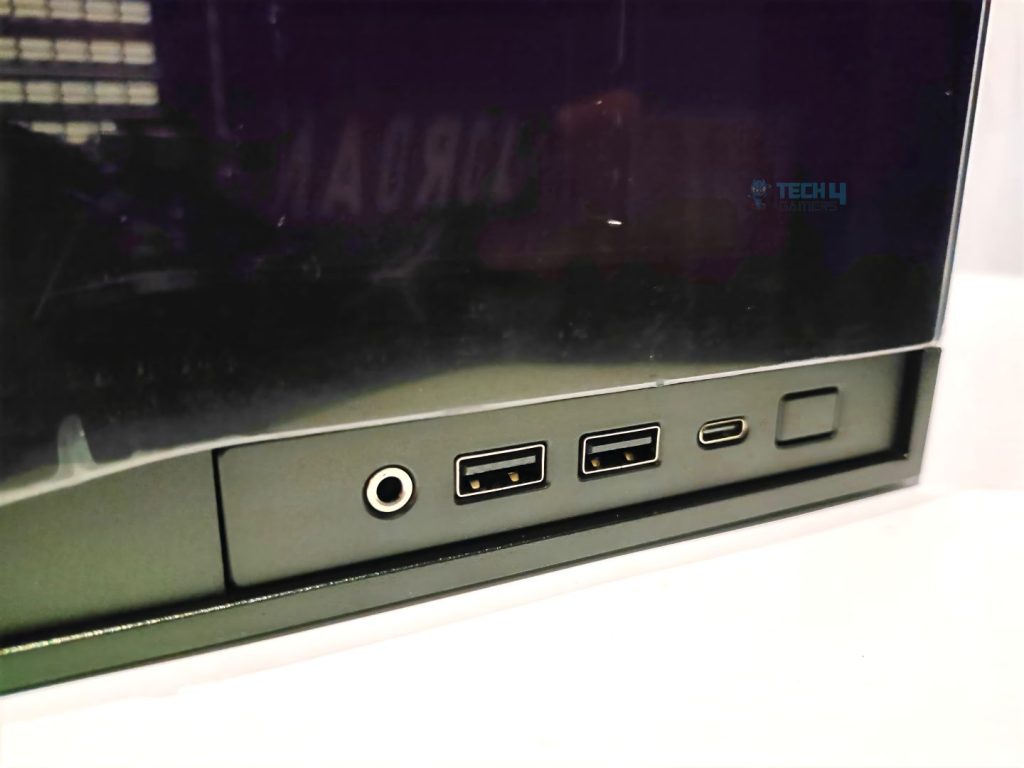
The case is designed to support ATX, M-ATX, Mini-ITX, and ATX Back-Connect motherboards and can accommodate graphics cards up to 400mm long and 160mm tall CPU coolers while maintaining the compact form. The case also supports up to 9 fans.
Top Side
Lian-Li has also redesigned the vented portion with large line-shaped cut-outs for better airflow. The top panel also features the built-in mesh filters.
At the top side of the case, the panel features a brushed aluminium strip cover beside the vent. You can see the cap on that strip, which can be removed, and you can install the I/O hub there.
Bottom Side
Looking at the bottom of the case, there is a large grommet-covered opening, which could confuse users. What’s this for? Well. This is for the cable management for the power cables for the graphics cards coming from the power supply. The grommet is between of back and front parts of the case.
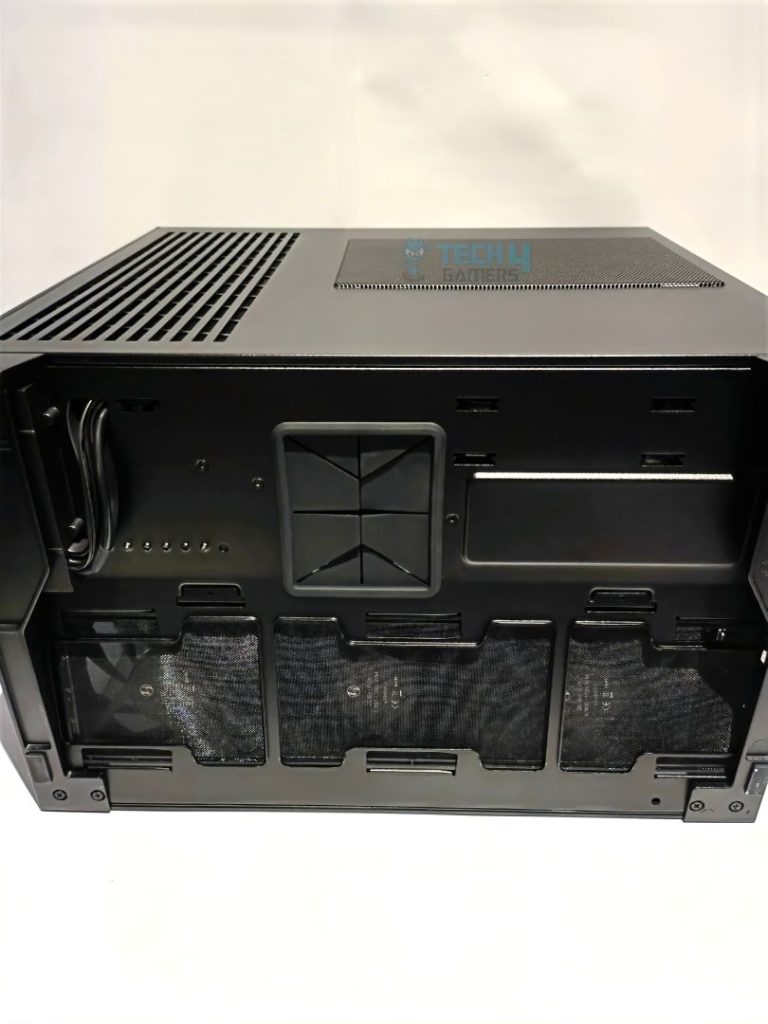
You also get the mesh dust filter at the fan mounting area, which can be removed by sliding. The feet are made up of aluminum, which feels sturdy.
Rear Side
On the rear side of the case, O11-D Mini V2 provides five expansion slots and a 120mm fan-mounting slot for the exhaust fan. Also, at the bottom, there is a tray for the bottom fans that can be easily removed for cleaning.
There is a plastic cap placed above the expansion slots, which can be moved to the top if you have installed the motherboard at the lower position (Useful for M-ATX and Mini-ITX Motherboards to close the gap.

Alongside expansion slots, there are HDD trays, which are also tool-less and can be removed by thumb screws. You can install two storage drives with sizes of 2.5” or 3.5”.
Back Side
Speaking of the back side of the case, there are identical extensive line cutouts for the fans that we have seen on the top side and also features the built-in mesh filter.
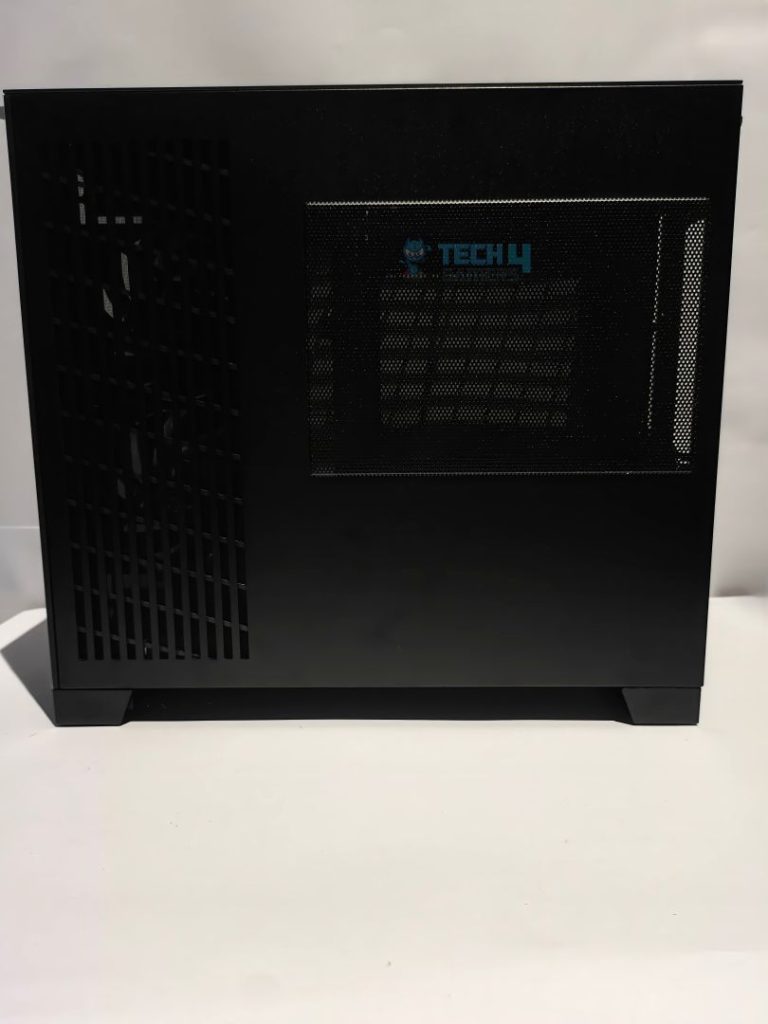
There is also a dust-filtered built-in mesh on the panel, which helps the power supplies breathe fresh air.
Closer Look Inside
The interior has not been changed much compared to its predecessor, maintaining the compact build overall, except for the rubber grommets. Above the motherboard tray, there are three large cut-outs for the cables to pass through.
The GPU anti-sag bracket is pre-installed for the horizontal graphics cards, secured by two thumb screws. It can also work for the vertical graphics cards.
Floor
The floor is slightly tilted by 11 degrees, which is another salient feature of this case. According to Lian-Li, this could improve the GPU thermals by 3 degrees.
The bottom fan bracket can be removed, allowing you to install the fans outside the case. You can install the 3x120mm fans or the radiator up to 360mm with a maximum thickness of 92mm for M-ATX and 72mm if the ATX motherboard is installed.
Side
Looking at the right side inside the interior, there are two side fan cover brackets for optimized airflow. These covers can prevent air pressure leaks on the unused cut-outs. One cover is installed on the top and one at the bottom.
Also, at the main rubber grommet, there is the support bracket for the 24-pin motherboard power cable, which is extremely useful for custom sleeved cables or Lian-Li strimmer, so your cables do not hang or bend.
The side supports up to a 240mm radiator, and two 120 mm fans can be installed.
PSU & HDD Cage
Lian-Li has completely redesigned the hard-drive cage; instead of one, you get two tool less separate cages that can be removed individually by the thumb screws. On top of that, you can see the PSU bay with the offset mounting bracket for ATX powersupplies.
Cable Management
O11-D Mini V2 features 7 Velcro Stabs for the cable management on the back side of the case. Two straps are placed at the top. One strap is on the back side of the motherboard cut-out. Two straps are on the front of the storage cages, and two are at the bottom.
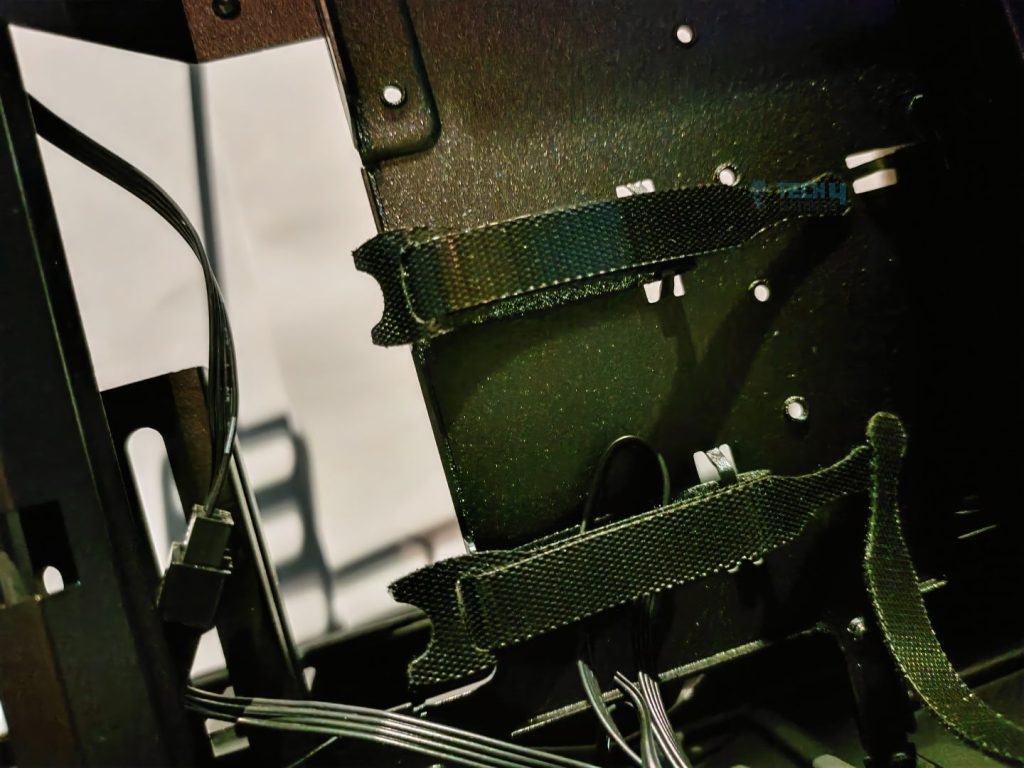
System Assembly
The system assembly was effortless thanks to the modularity and ease of cable management in the case.
Before installing the liquid-cooler, make sure you have already seated the motherboard. Most importantly, the EPS 4+4 CPU power cable is connected to the motherboard and all the necessary fans on the top PWM headers, or any essential connections. This is because you might run into a clearance issue where the cable would simply refuse to reach the header due to a gap of only a few centimetres.
– Usman Sheikh
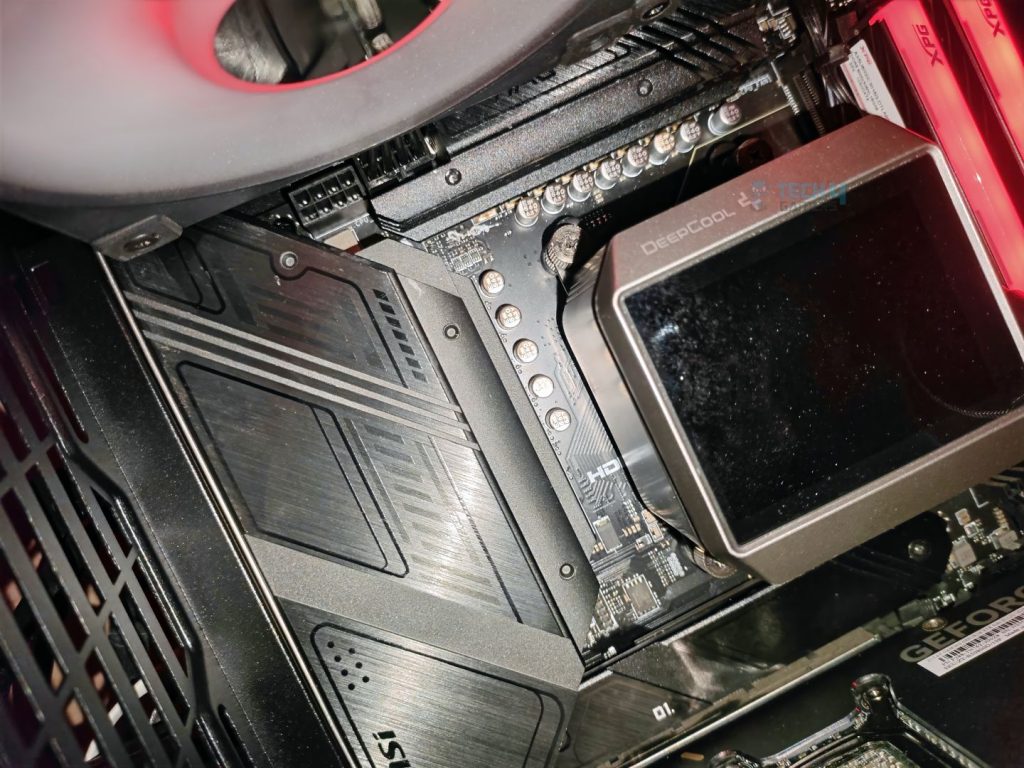
If you have an ATX form-factor board, make sure to remove the bottom fan tray, which already has three pre-installed fans. This is because your fingers might not reach the front panel, audio, PWM, or any other connector at the bottom if the fans are pre-installed.
Since this case has the offset mounting for the power supply, make sure to remove the mount first, assemble the power supply on the mount, and then install it in the case.
We also suggest that our audience remove the HDD cages before assembly. Under the cages, two Velcro straps can be helpful for cable management.
System Methodology
How Do We Test Case Performance
- We test the graphics card and CPU combined, and solo tests are also done for each hardware at the different PWM speeds. This tells us how adequate the air flow is in the case to cool down the hardware. The CPU runs at the unlocked TDP of 105W on Ryzen 7 9700X, and the GPU maintains the stock clock configuration at the fixed fan speed.
- For the noise-normalized temperatures results, we have individually normalized the sound output for the radiator cooler, graphics card, and case fans to maintain the consistency at a set 43dB(A) of the case. The test is run for 15 minutes, putting the load on the GPU and the Processor at the same time. The processor is set at 5.1GHz at 1.15V Core-Voltage, and the GPU is running at the stock clocks at the set fan speed for the noise testing.
- The stock fan configuration is retained. If the case does not include any fans, we will use our standardized fans methodology in the chassis, maintaining the positive airflow.
- It is essential to test the other components, such as M.2 and Chipset, in addition to graphics cards and processors. We have tested them in our combined workload.
What Tools Do We Test
- We use 3DMark Speed Way for Graphics Card thermals and Cinebench R23 for the processors. PCMark10 Consistency Test is run for SSD thermals. For the temperature recording, we use the HWINFO64 Pro version.
What Cases Have We Compared Against?
- Since we don’t have other Lian-Li Cases to test it against, we will use it against our primary Hyte Y70 case, which does not come with a fan. Still, we have installed a total of 6 fans inside the case, maintaining the positive air-pressure, which is the best scenario for HYTE here, and will compare it against the stock configuration of the Lian-Li O11D Mini V2 that comes with the five reverse intake fans.
Controlled Environment
- We have eliminated the influence of ambient temperatures in our data, and all results are presented as deltas over the ambient conditions. The tests were done in a controlled environment with a room temperature of 24°C to 25°C.
System Configuration
- CPU: AMD Ryzen 7 9700X
- RAM: XPG Lancer 16×2 6400MT/s CL28 (Tuned)
- Motherboard: MSI B650 TOMAHAWK WIFI
- Cooler: Deepcool Mystique 360 Liquid Cooler (ARGB fans)
- GPU: ZOTAC SOLID RTX 5080
Individual Thermal Tests
CPU Thermal Results
We’ve kicked off the tests from the individual benchmarks and tested the CPU thermals in each case. Lian Li O11D demonstrates better CPU temperatures than the full-tower Hyte Y70 at both PWM levels by almost 2 to 3 degrees.
GPU Thermal Results
Now that we have moved on to graphics cards, there is only a negligible difference in thermals. Still, I’m impressed by the O11-D Mini airflow, keeping it tight against the HYTE’s best.
Combined Thermal Test
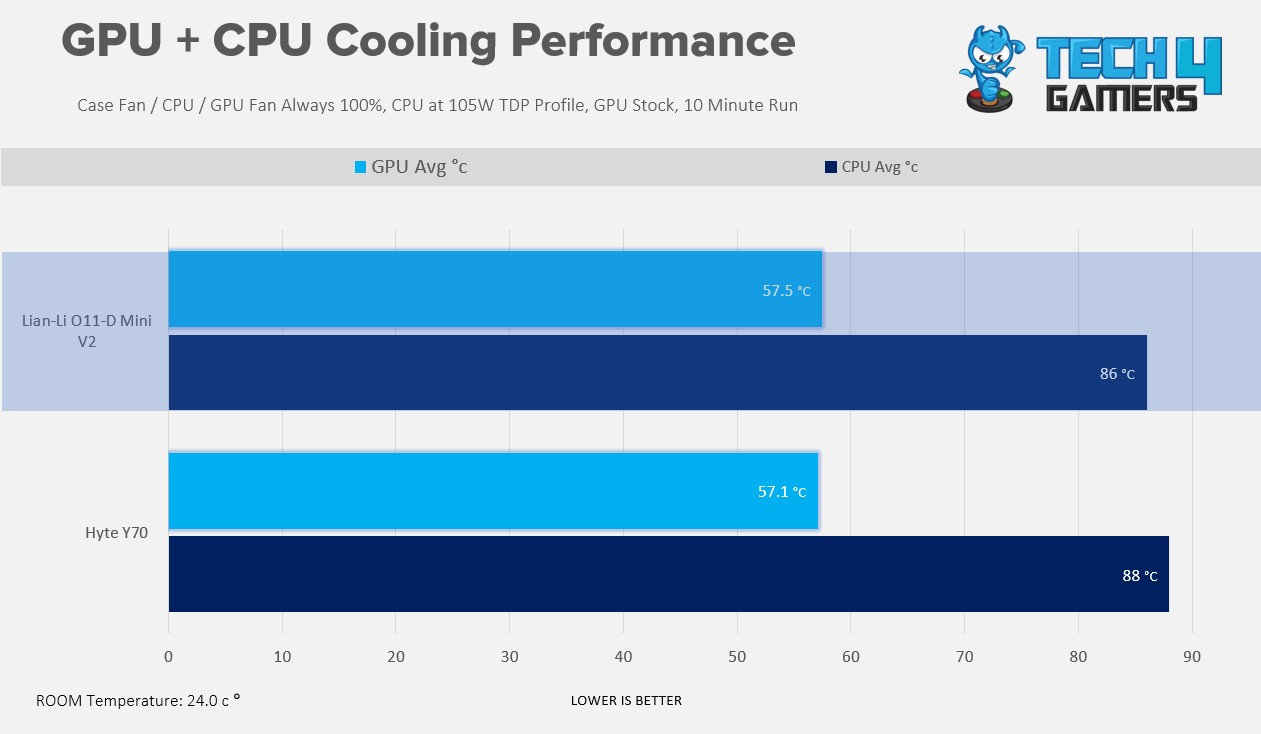
The combined tests are the real test for any case. Both tests performed roughly the same for the GPU workload; however, Lian-Li O11D Mini V2 takes the lead on the CPU.
Chipset and M.2 Thermals
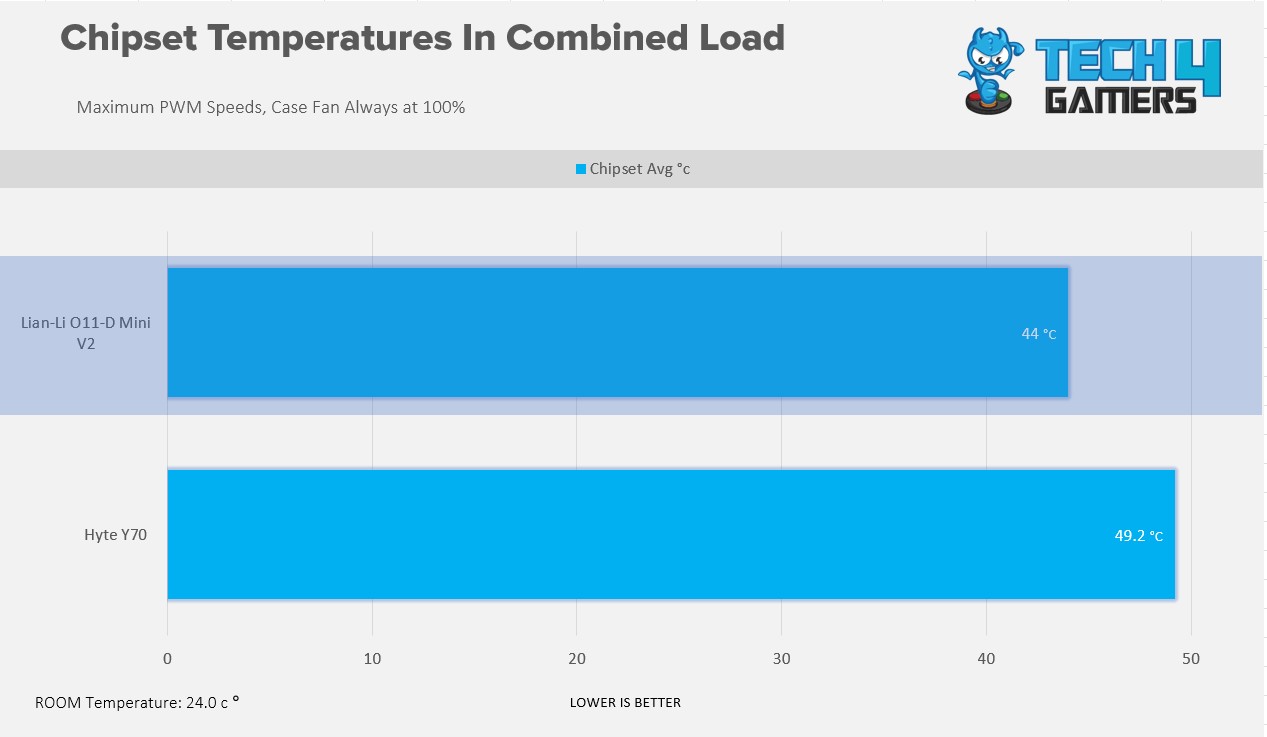
We are looking at the chipset temperatures on our AM5 B650 Motherboard. Lian-Li O11D Mini V2 is much cooler, as the airflow is very restricted to the chipset area due to the vertically mounted graphics card in HYTE Y70.
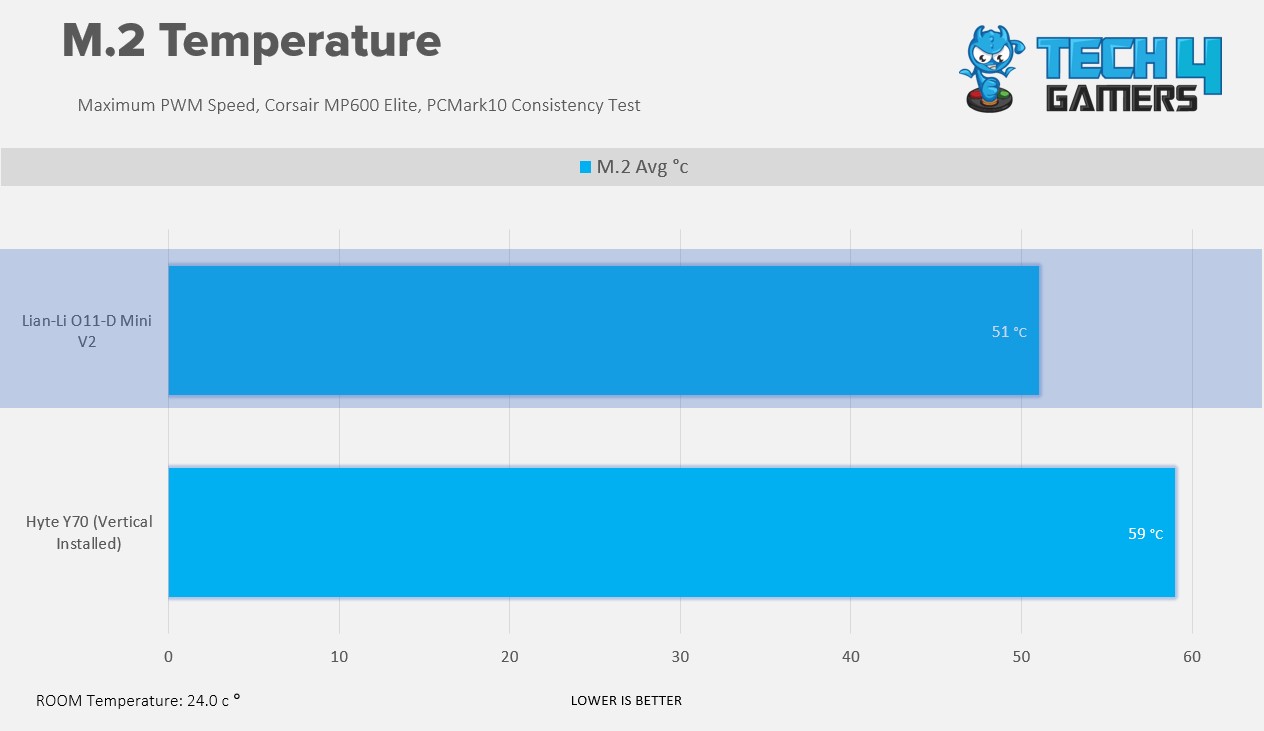
We have run another benchmark to test the SSD thermals. This tool hammers the SSD with an immense amount of writes. In the 10 minutes of run, the SSD is almost eight degrees cooler, which is impressive.
Combined – Noise Normalized Thermals
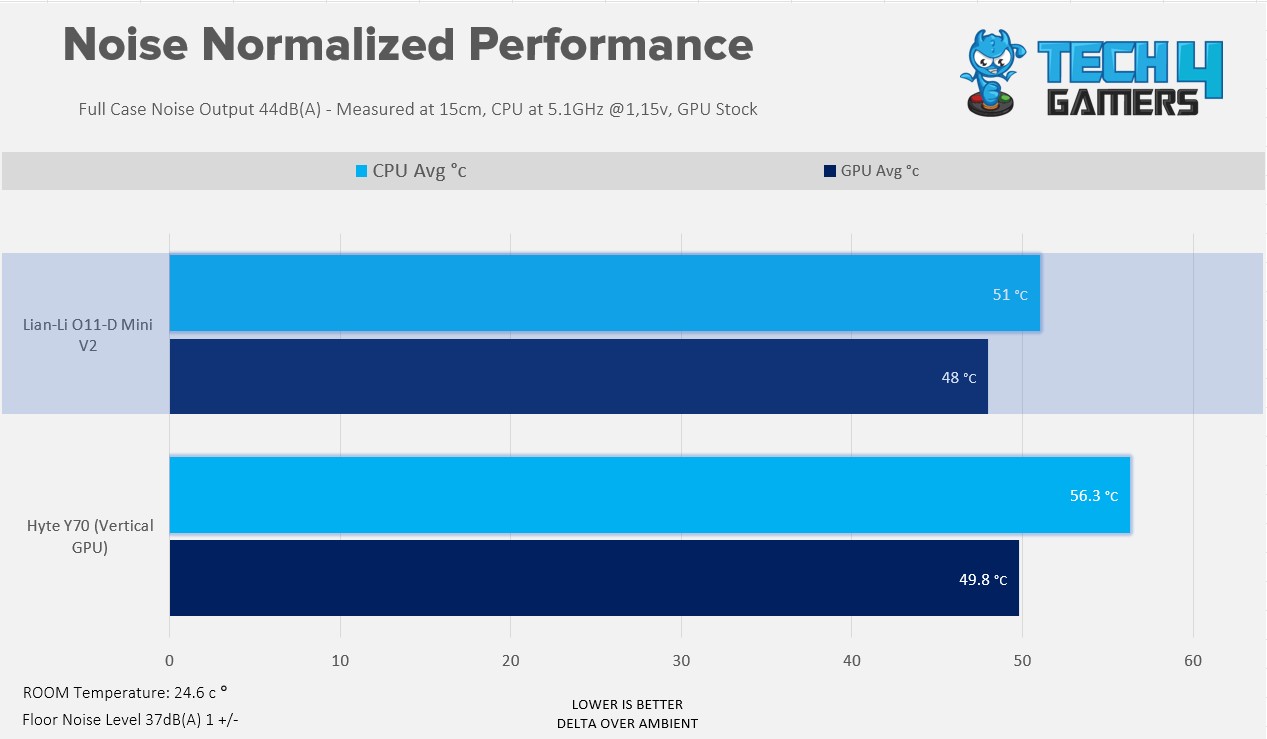
In the noise-normalised tests, Lian-Li O11-D has outpaced the Hyte Y70. Keep in mind, the Hyte is a massive case, and we have installed six case fans, but it still runs hotter than the Lian-Li here. The Noise is normalised to 44dB(A).
Case Fans Performance & Noise Levels
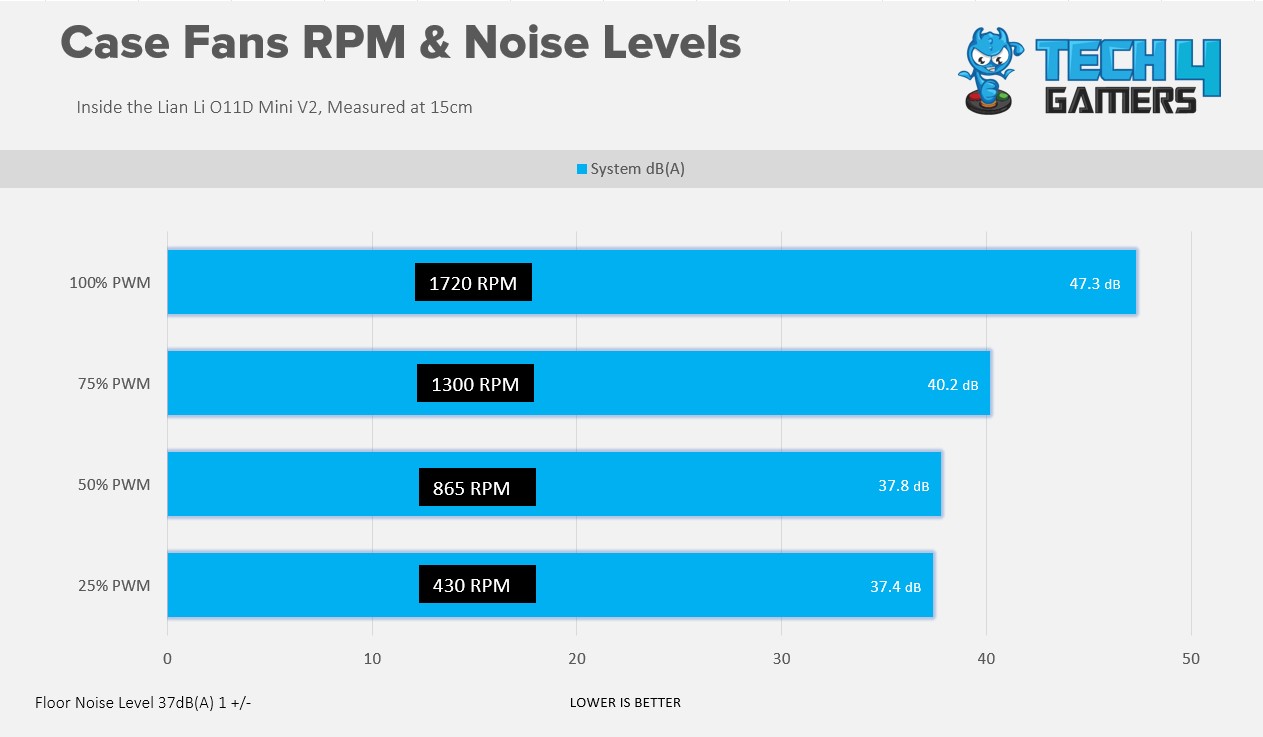
I’m impressed with the Lian-Li Fans here. The fan was barely audible at 50% PWM, which is insane. The fans are optimised for the intake, but the noise levels are excellent here. They’re reverse fans, and naturally, they’re louder. Full Marks to Lian-Li for not cheaping out on fans! Considering the flow version chassis is only $10 more premium, which includes five fans as compared to the non-flow version.
Should You Buy It?
Buy It If
✅ Compact Design & Decent Hardware Support: This case supports larger ATX motherboards and power supplies, graphics cards up to 400mm long.
✅ Premium Aesthetics: Sleek Fish-tank design with a pillar-less tempered glass, featuring a slanted bottom fan tray that makes the fans ARGB more visible while increasing airflow.
Don’t Buy It If
❌ Still a Big Case For Some Audience: Smaller cases, such as mini-ITX chassis, would be better for the ultra-compact builds.
Final Thoughts
There is a lot to talk about the Lian-Li O11D Mini V2. It’s a worthy successor of the first-generation mini case in many ways. They have redesigned several things. First of all, the size is increased by 2 liters with minimal footprint impact, which is not significant, and it still maintains the compact form. However, it now supports the larger PSUs and motherboards.
User Friendliness
The case has the relocatable I/O panel, which I don’t recall any other case vendor having come up with the idea. The I/O can be placed at the top or bottom, wherever you find it comfortable. The second thing, which is very nice to have, is the included adjustable GPU support for vertical and horizontal graphics cards. The top and the bottom mounting plates are removable, meaning you can install the fans outside the case. Lian-Li has also provided the vertical mounting bracket in the accessories.
Redesigned Airflow
This case has a slanted bottom to channel airflow directly to the graphics card. It also helps the vertically mounted graphics cards in terms of cooling. The case also now supports the 360mm Radiators. The previous version had limited compatibility with ATX motherboards.
Aesthetics & Few Changes
V2 retains a similar pillar-less design, identical to V1, and features a similar frameless glass at the front and sides. There are also changes to the I/O ports; the V2 now supports 2x USB 3.0, 1x USB-C (3.2). The previous version used USB-C (3.1) and kept the same HD Audio and Power Button. The case also has a removable bottom dust filter tray. Top and side dust filters are built-in and cannot be removed, unlike the V1 version. There is also a large rubber grommet at the bottom for the GPU cable routing. There is now only one large rubber grommet on the front, which has the adjustable 24-pin cable support bracket to maintain a clear interior layout.
Performance
Lian-Li O11D Mini V2 demonstrates excellent performance in overall tests, especially in noise-normalized tests. At a lower noise level, it still exhibited better performance. I’m also impressed with the Lian-Li included fans here. I did not expect them to be that good, to be honest, as most of the time when case manufacturers include the fans, they are for the light show.
Value
Lian-Li O11D Mini V2 is launched at $89.99; however, the flow version costs $99.99, which includes five high-performance fans. I can’t understand the logic behind pricing these casings at only $10 apart. The base model does not make sense, but O11D Mini V2 Flow is an excellent choice at this price.
Thank you! Please share your positive feedback. 🔋
How could we improve this post? Please Help us. 😔
I’m Usman Sheikh, a Senior Hardware Reviewer at Tech4Gamers with over a decade of experience in the tech industry. My journey began in 2014 as a senior administrator for Pakistan’s largest gaming community forum. Passionate about PCs and hardware, I specialize in testing and reviewing components like graphics cards, CPU coolers, and motherboards, while also sharing insights on overclocking and system optimization.


 Threads
Threads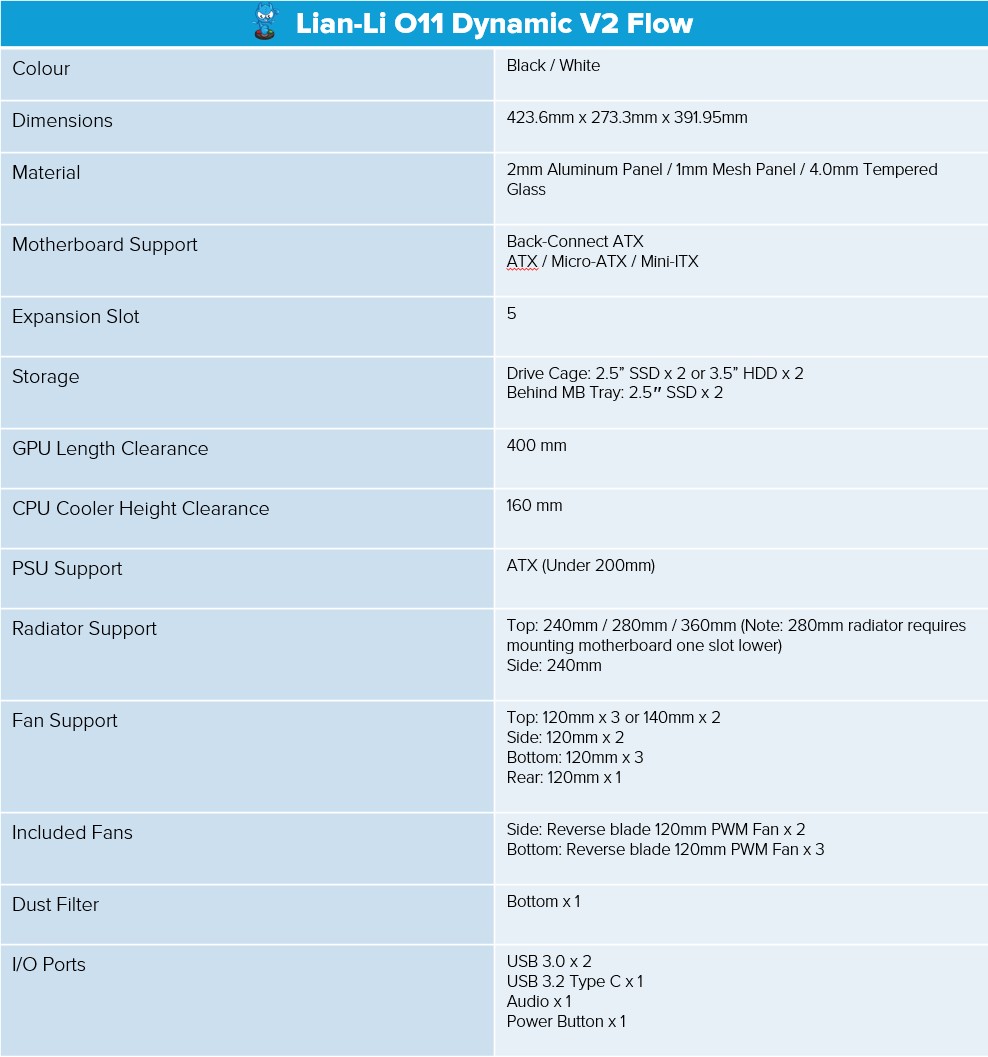
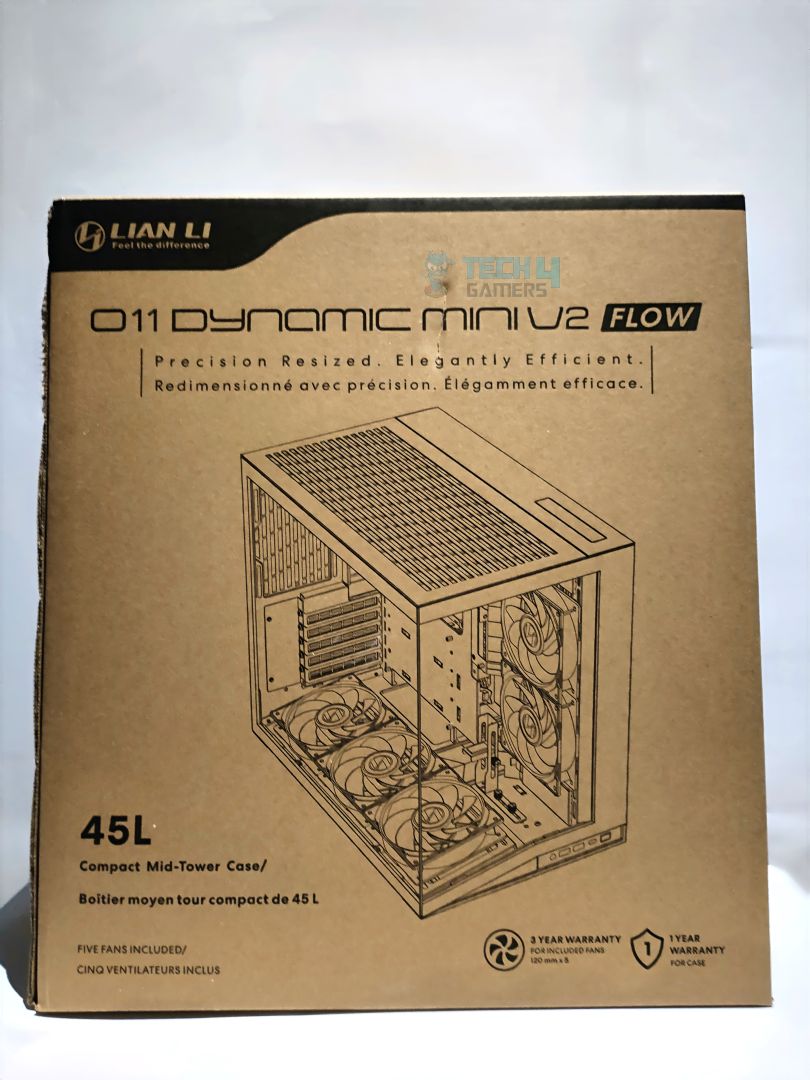
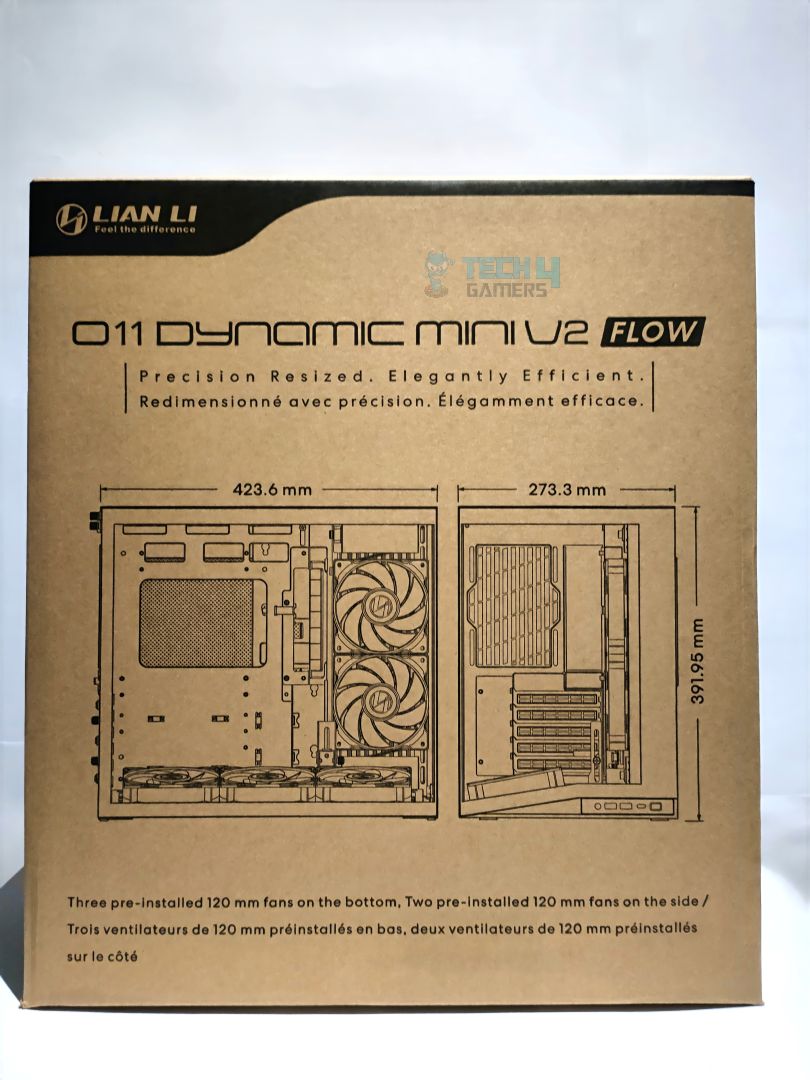
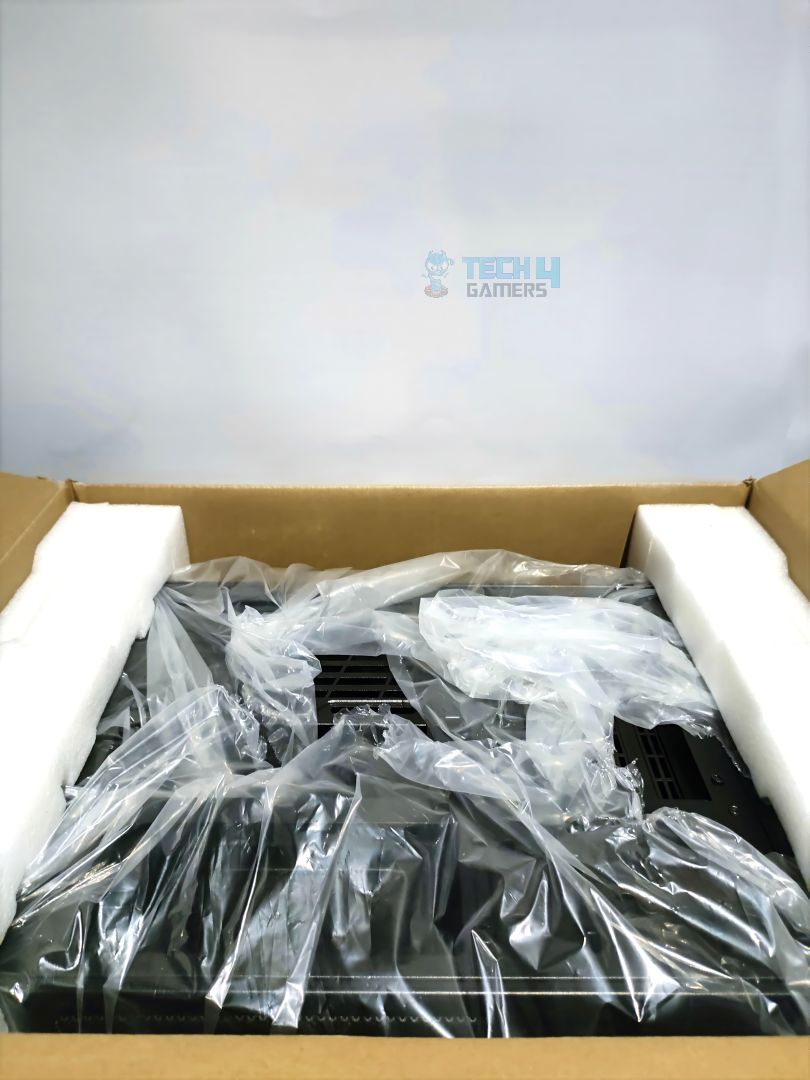
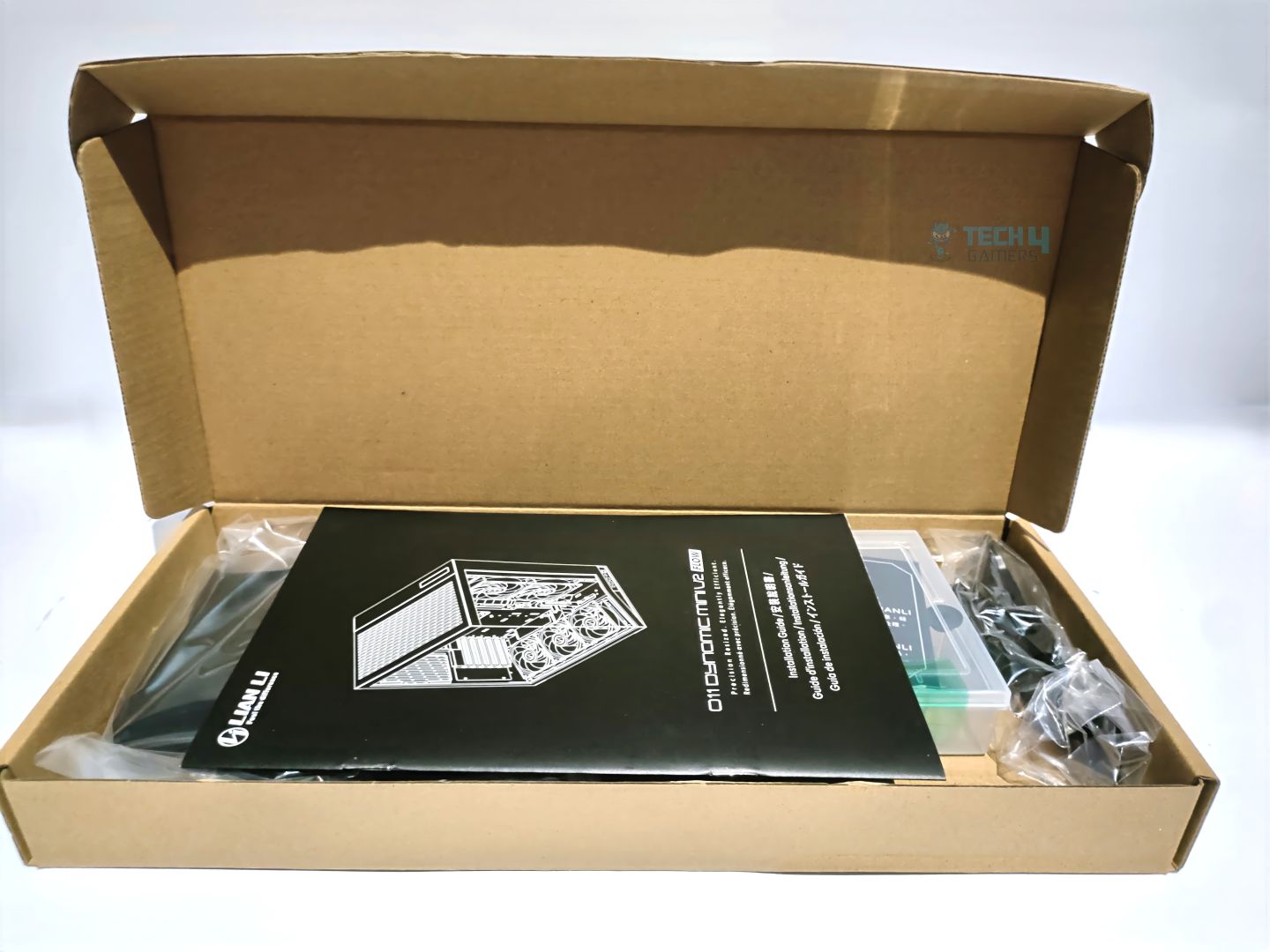
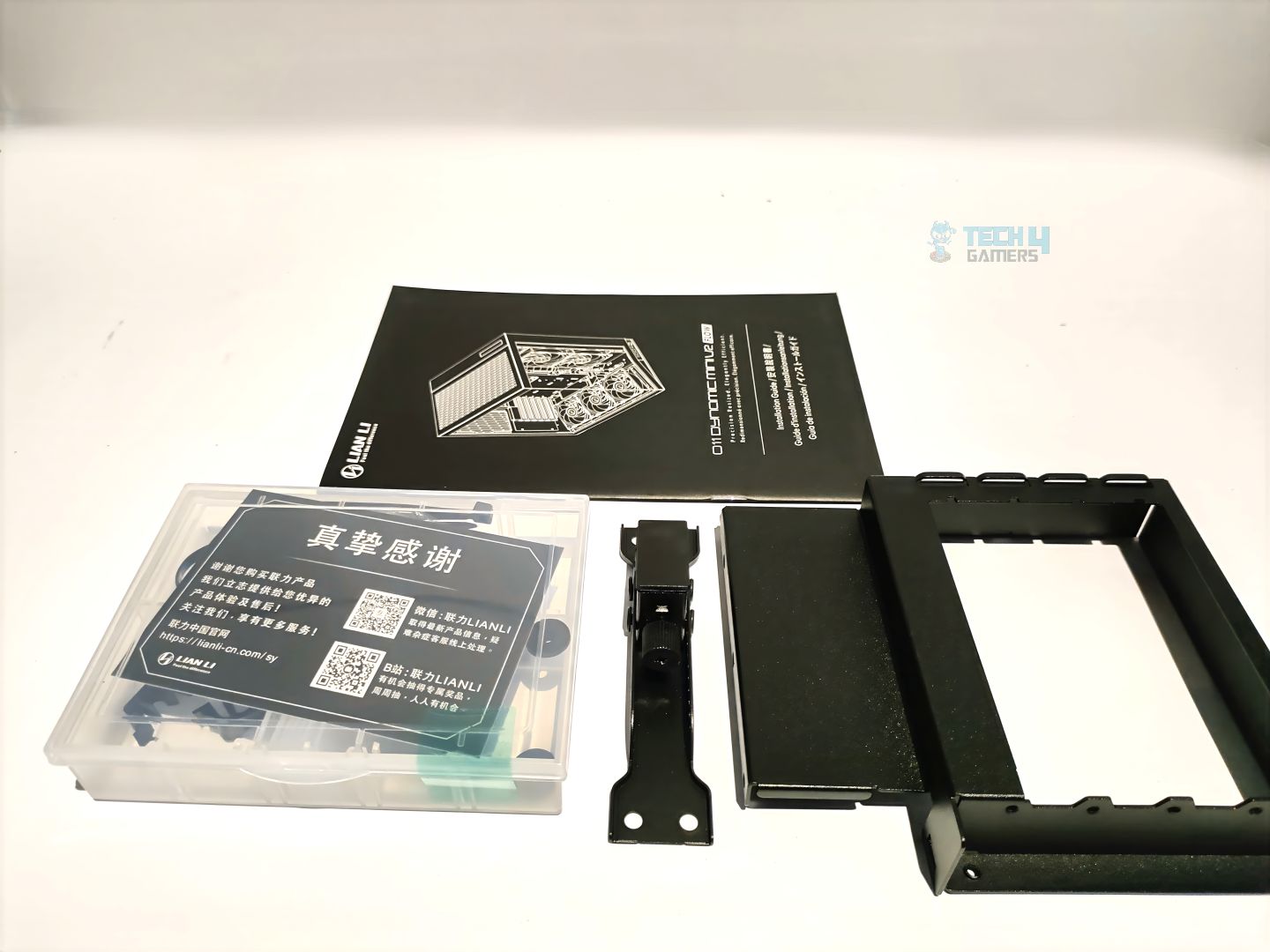
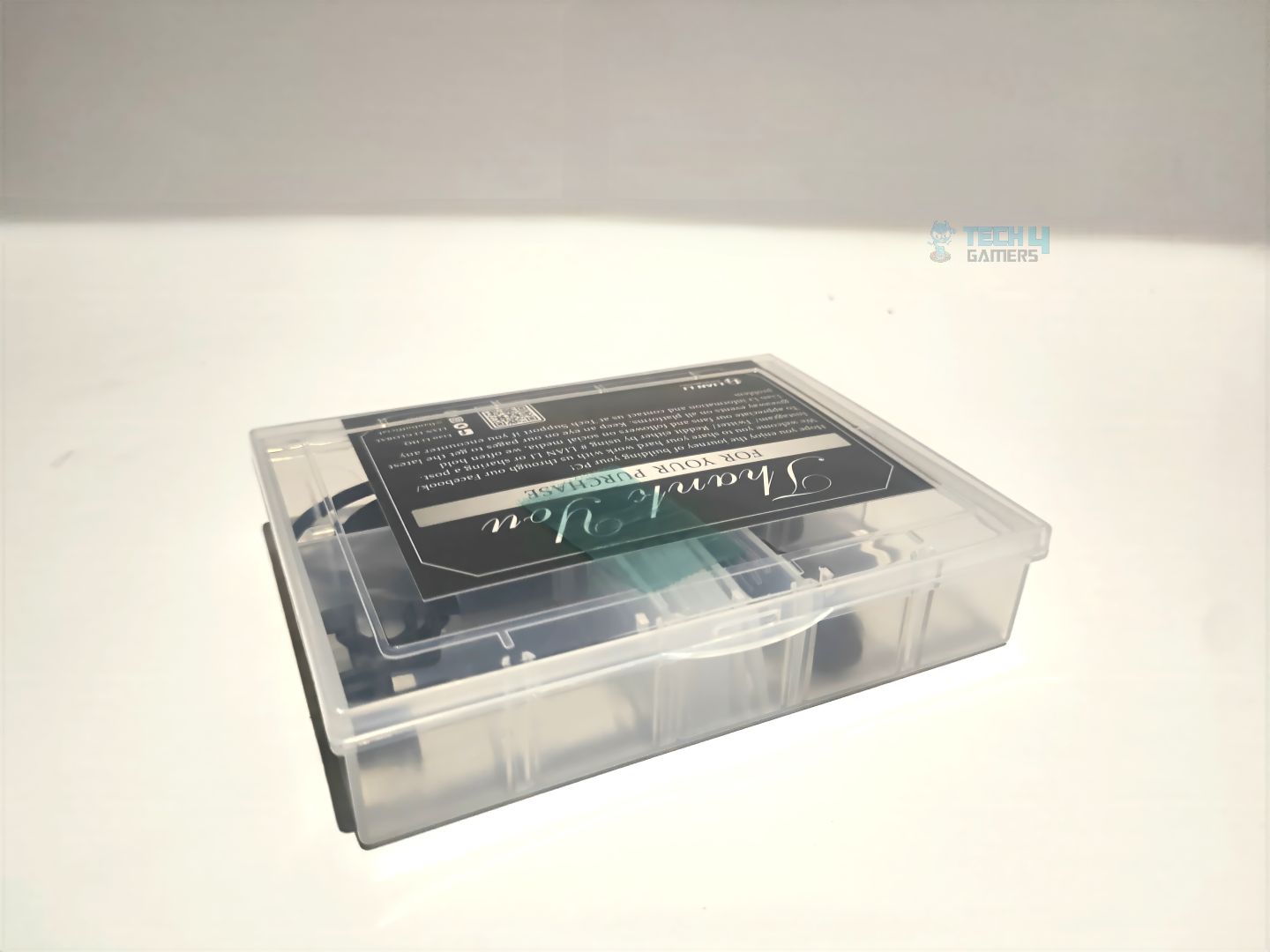
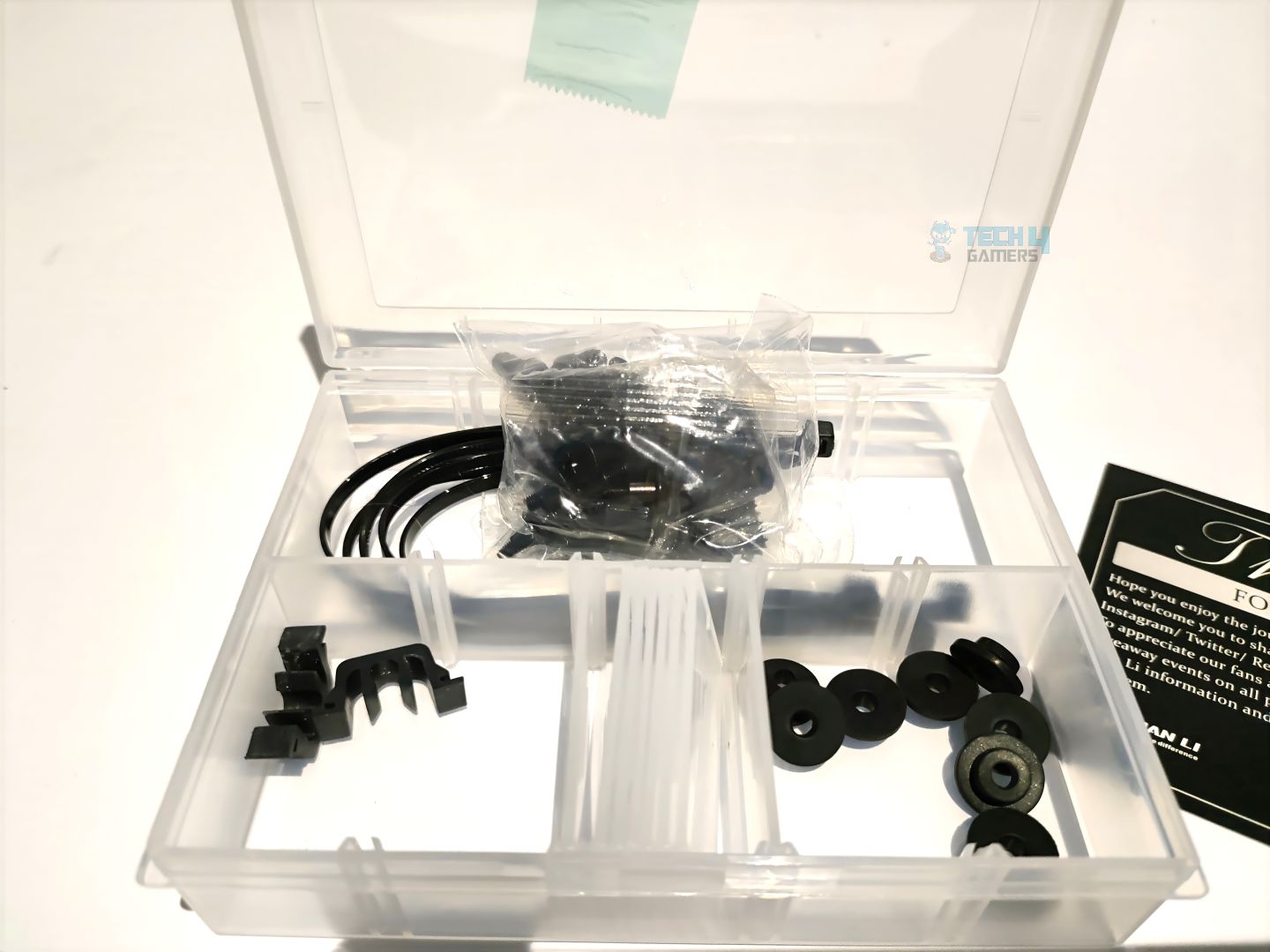
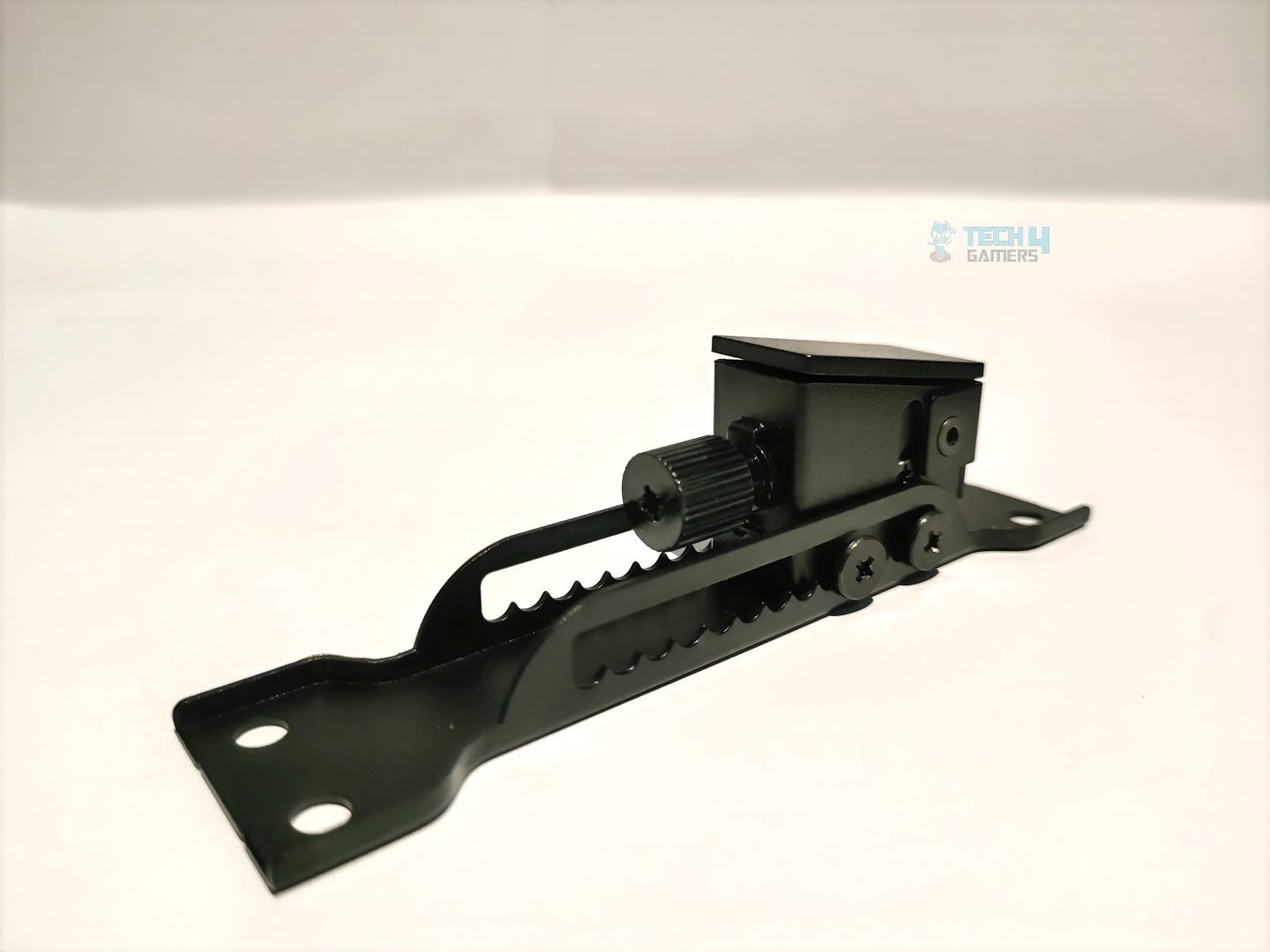
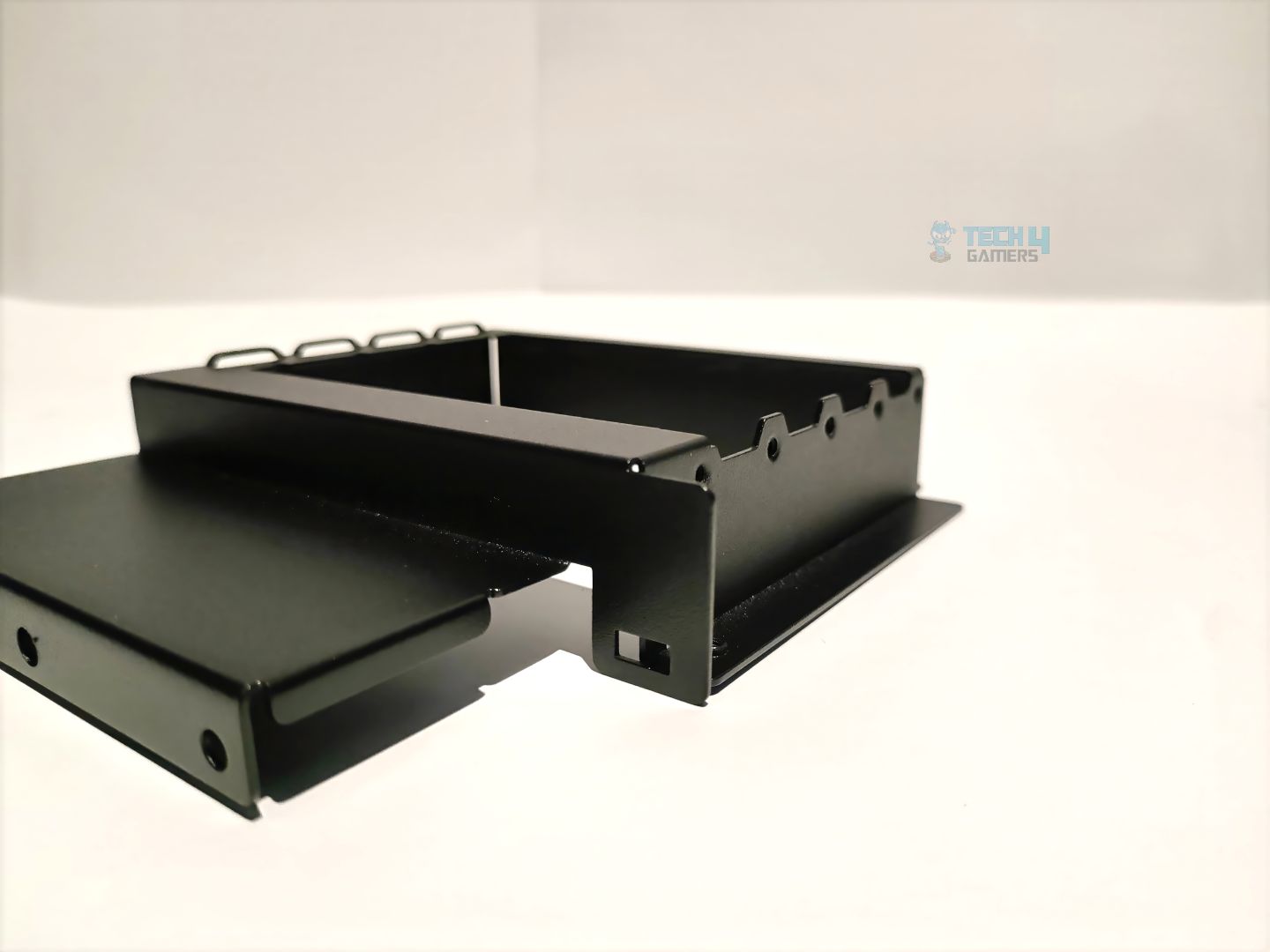
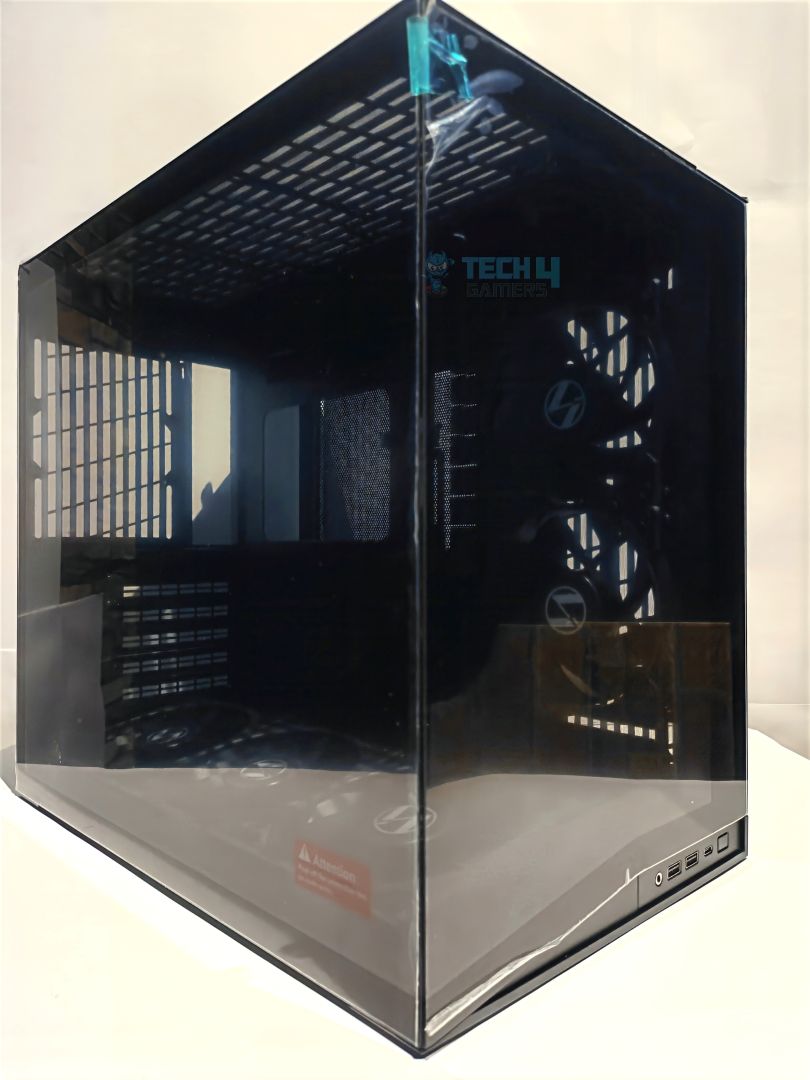
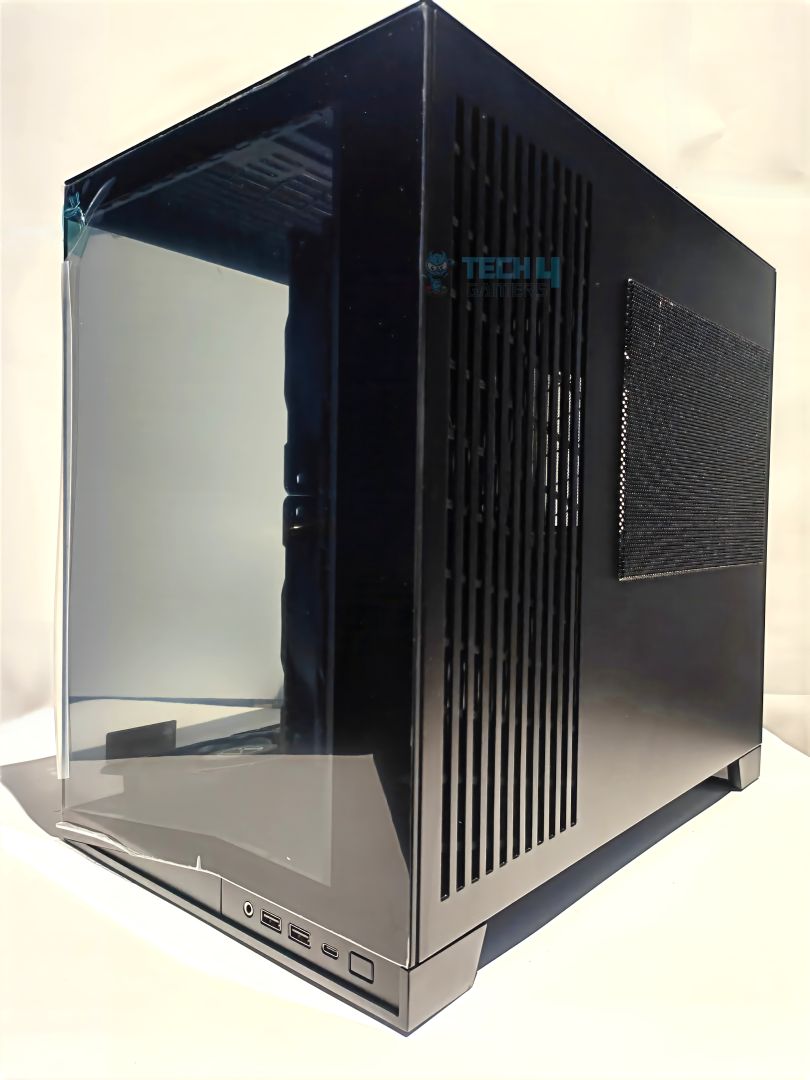
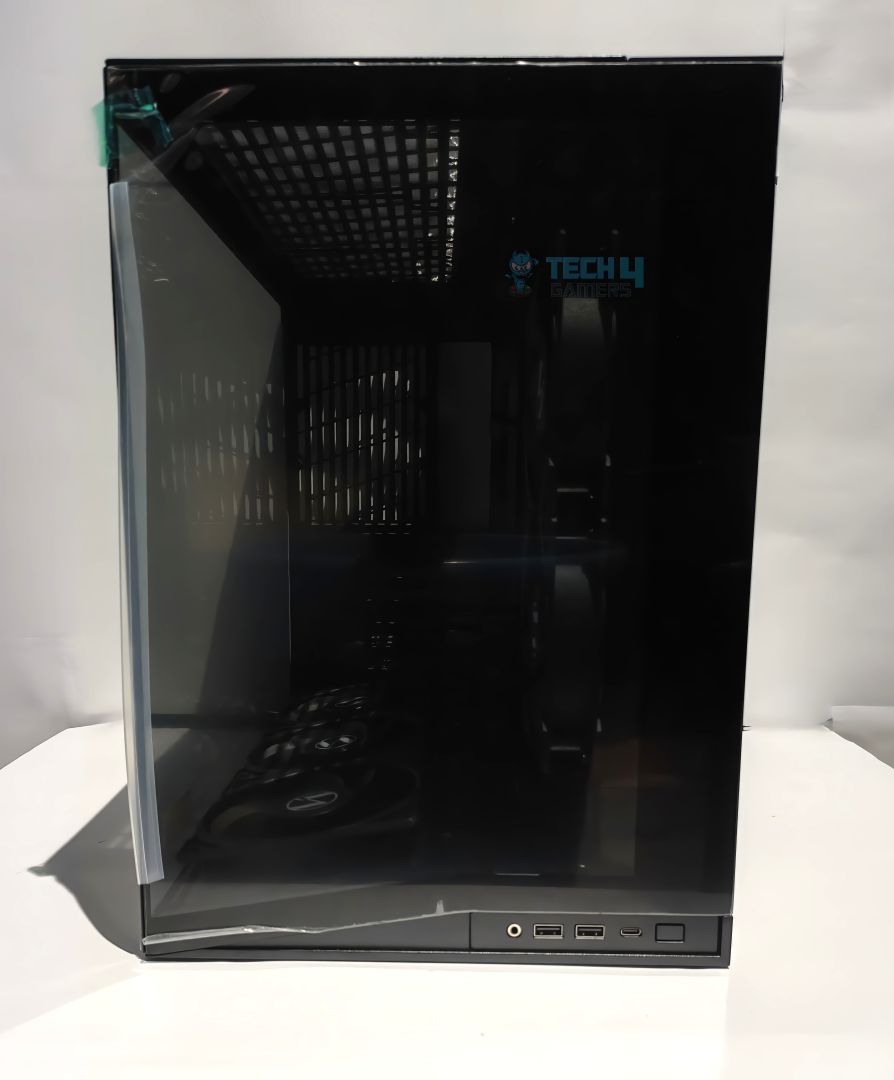
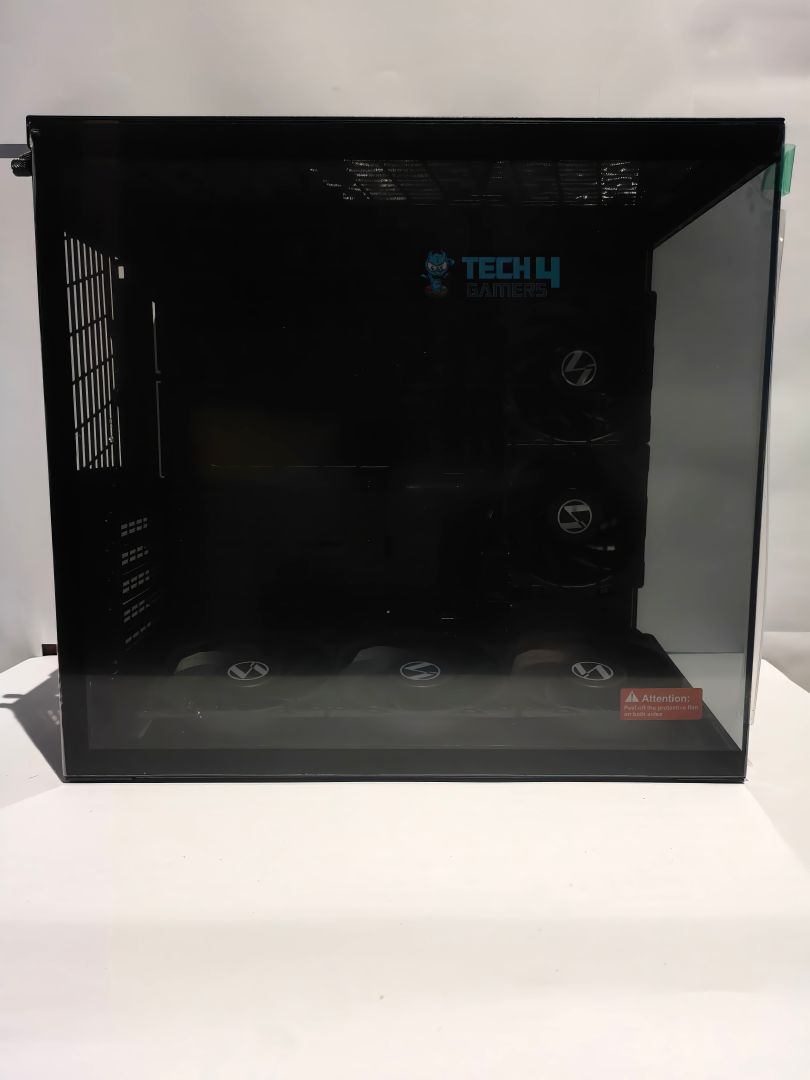
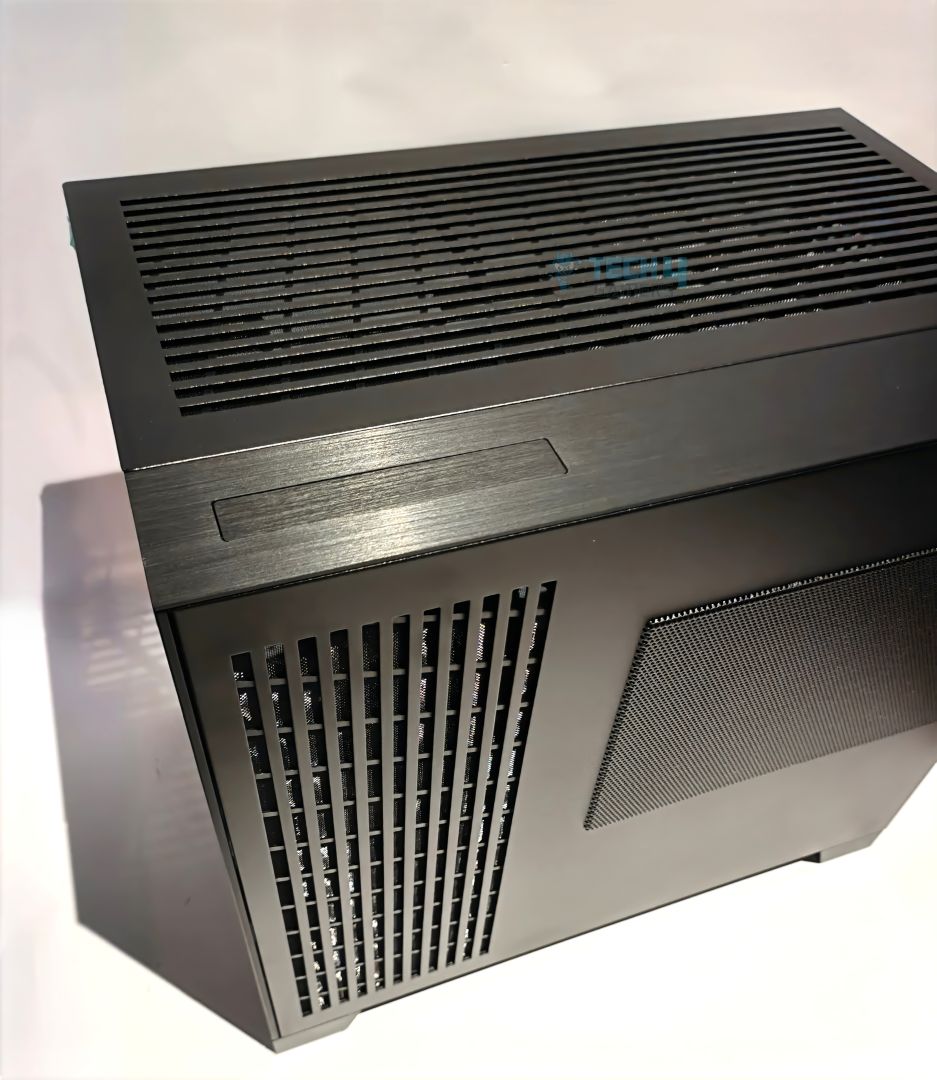

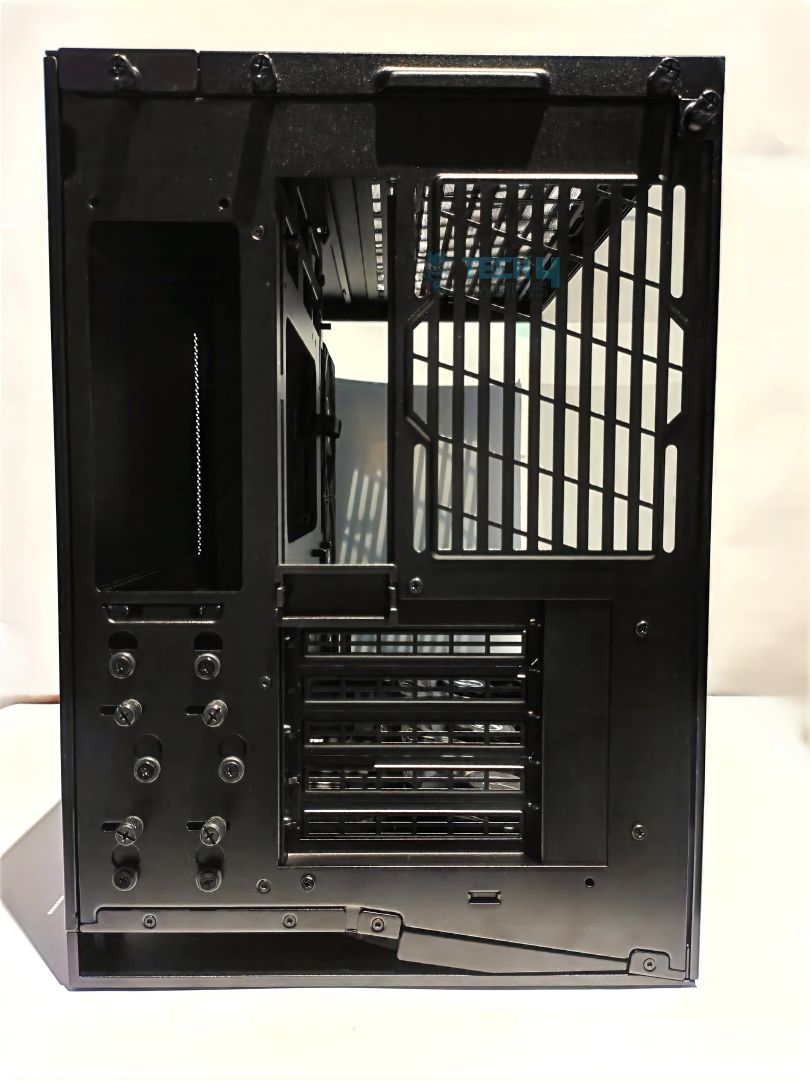
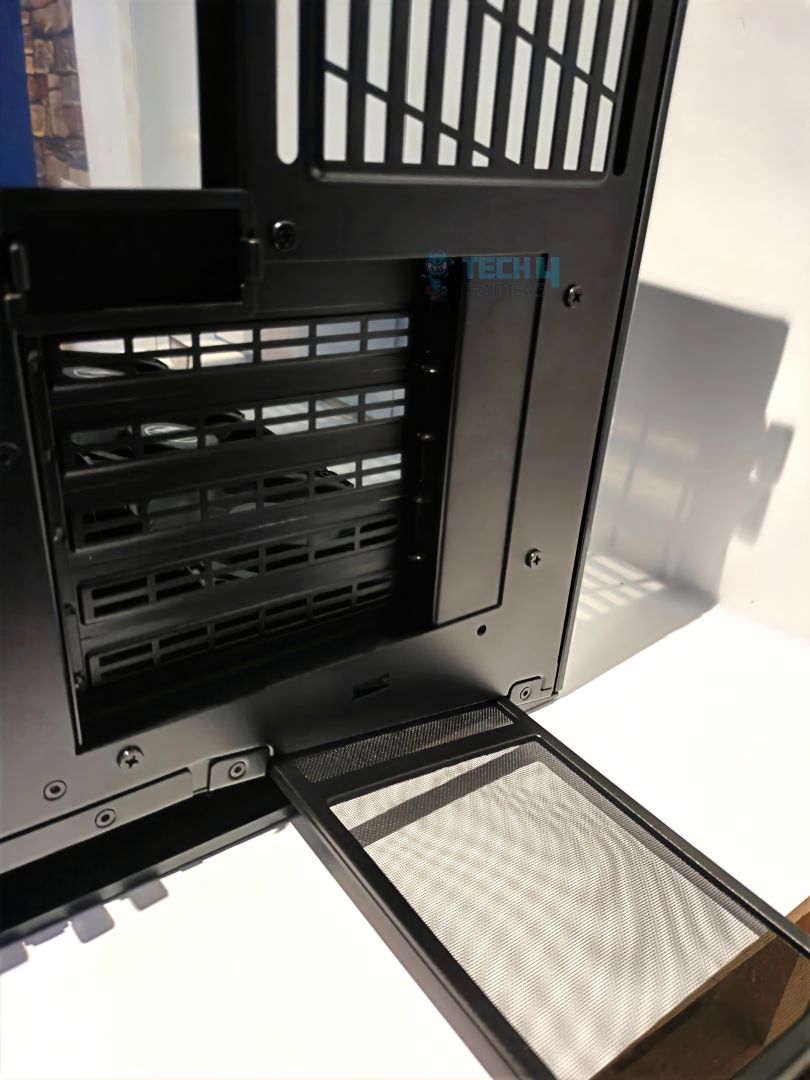
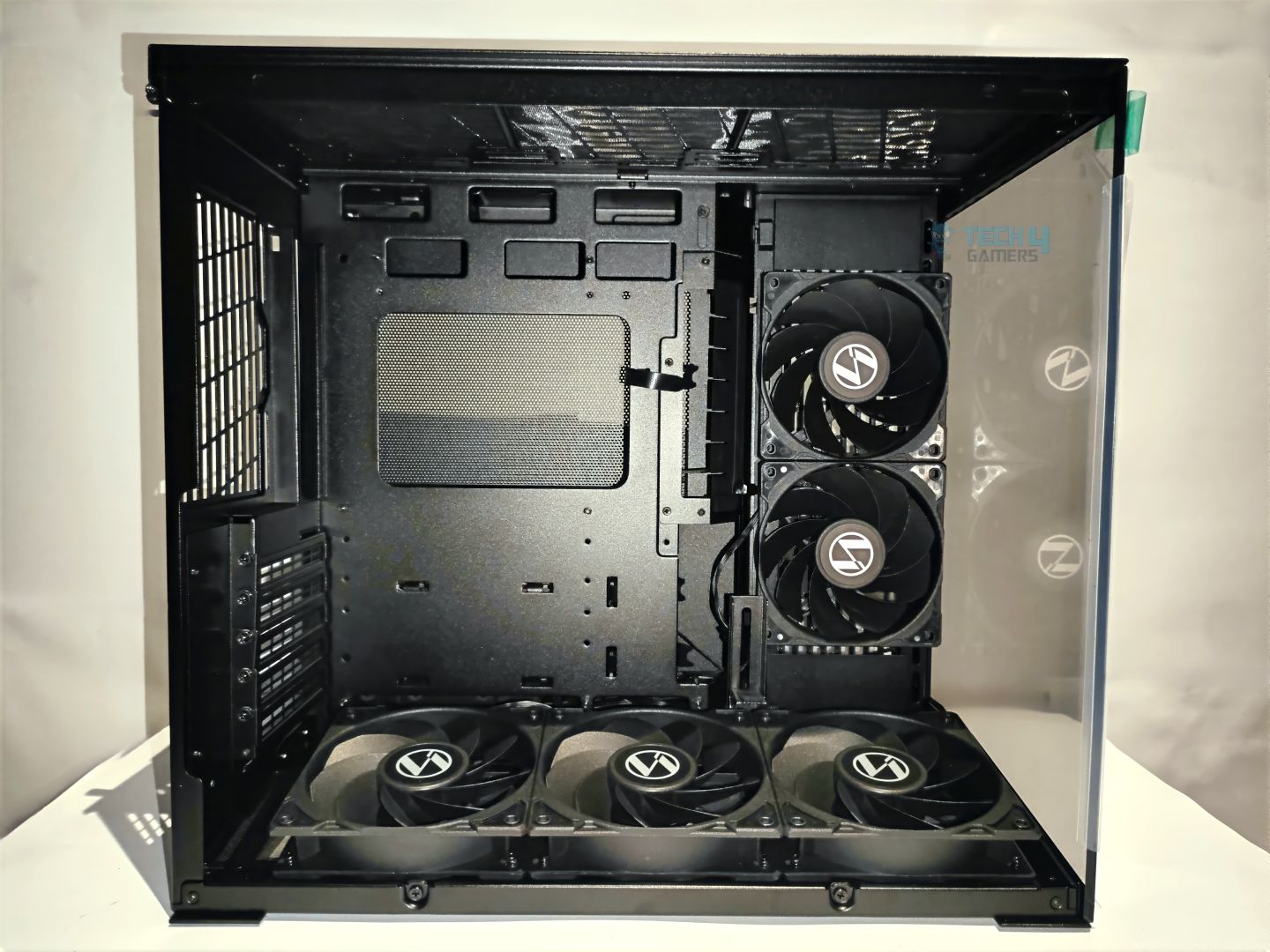
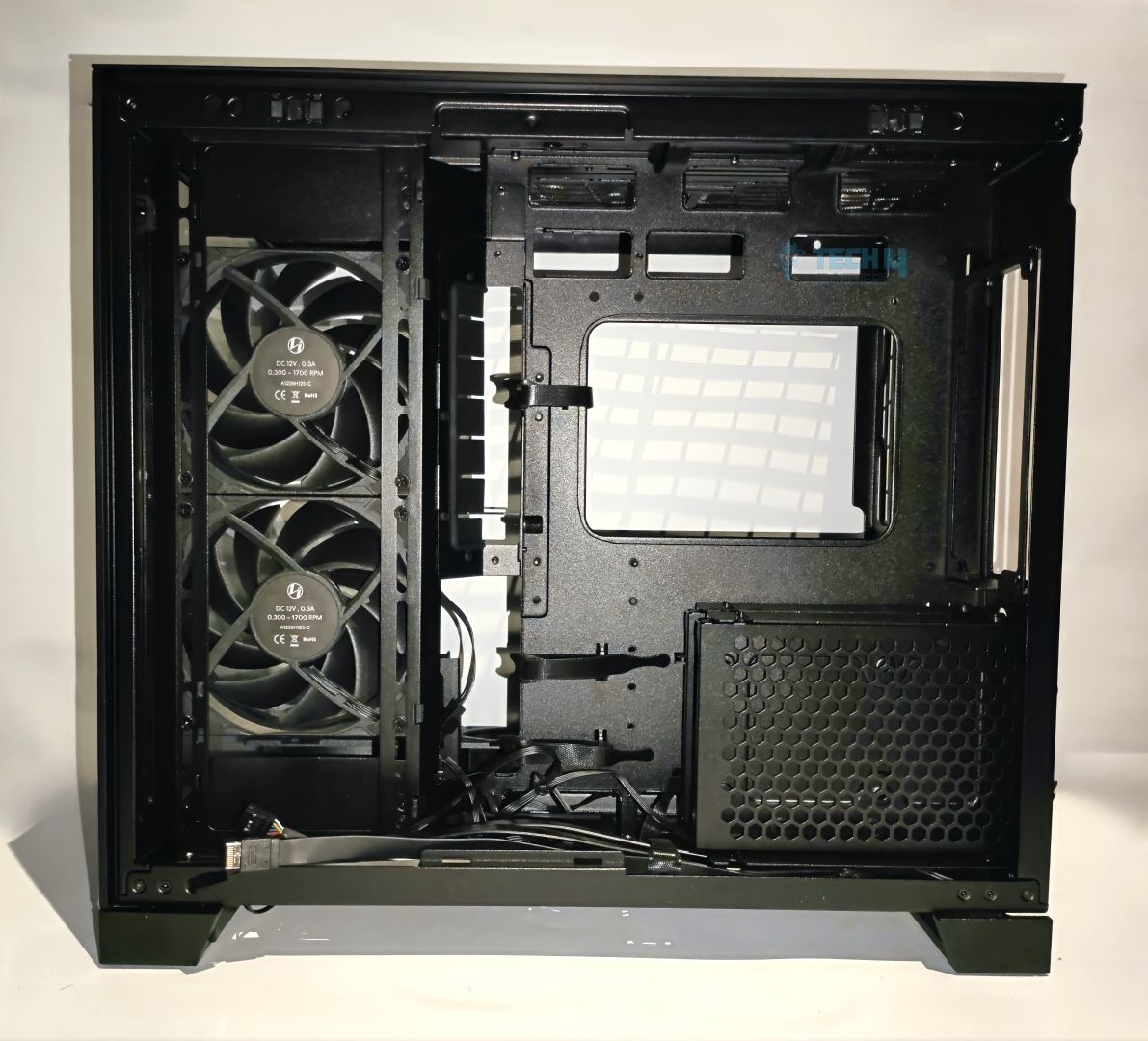
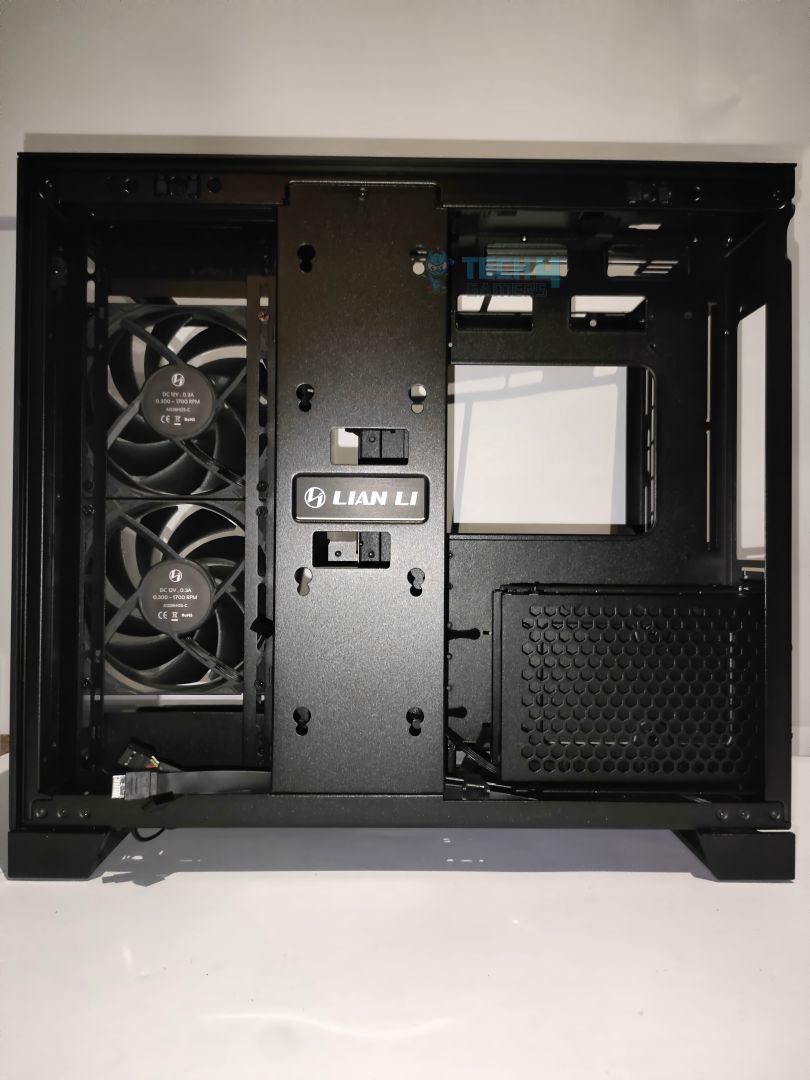
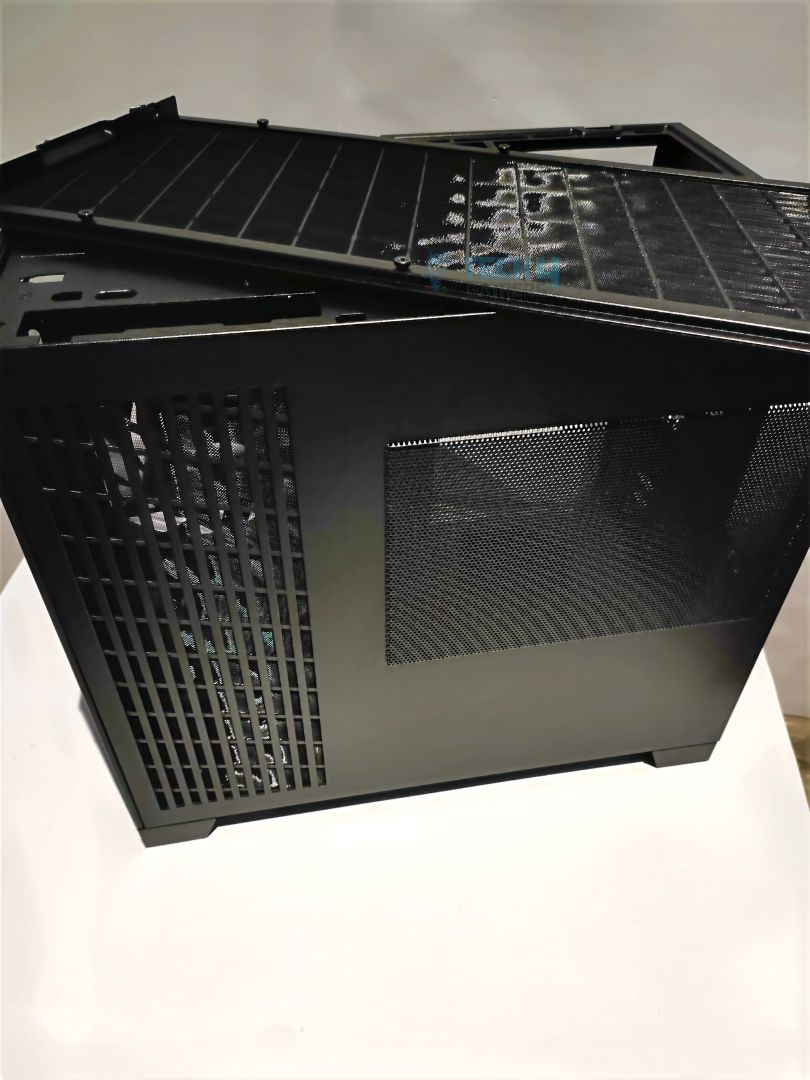
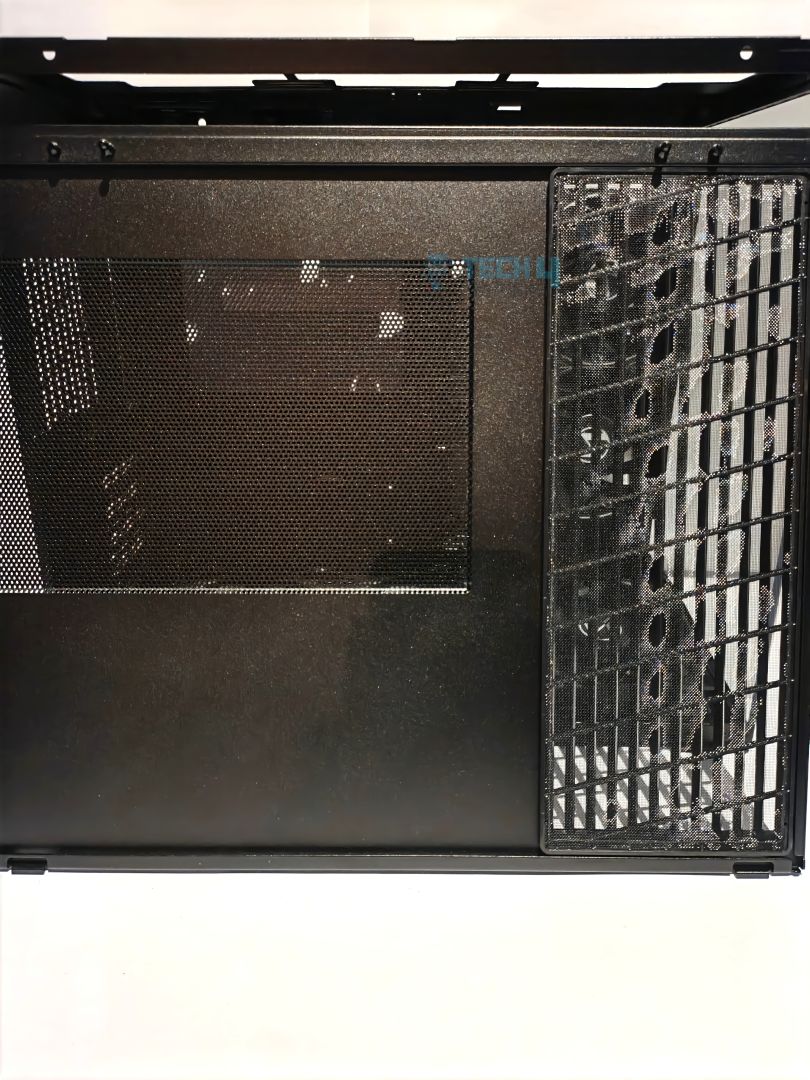
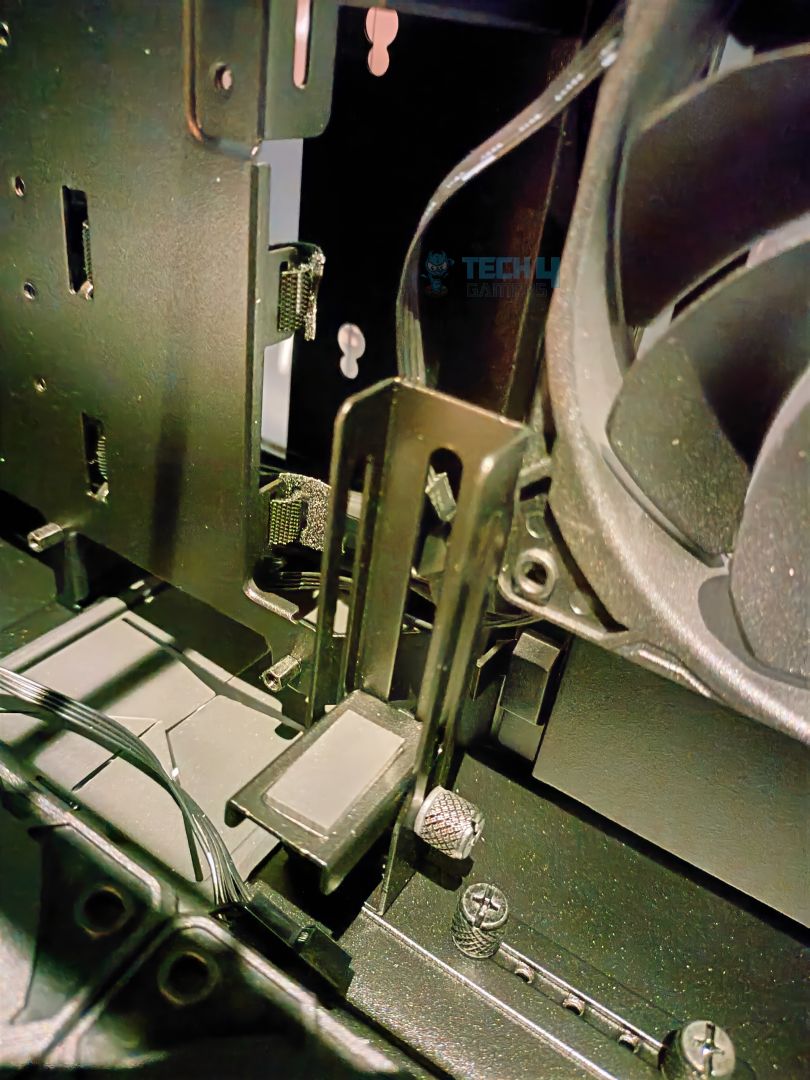
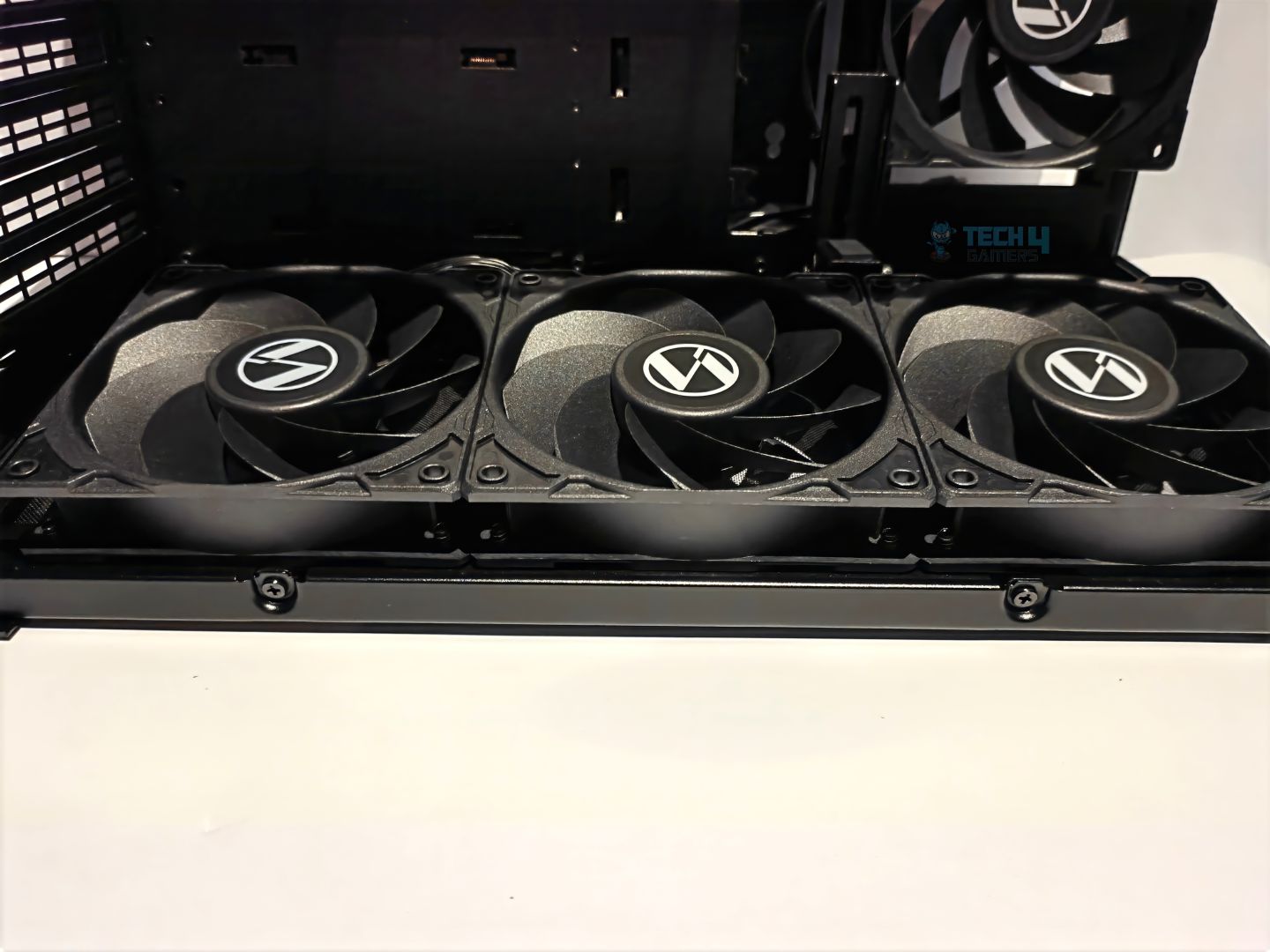
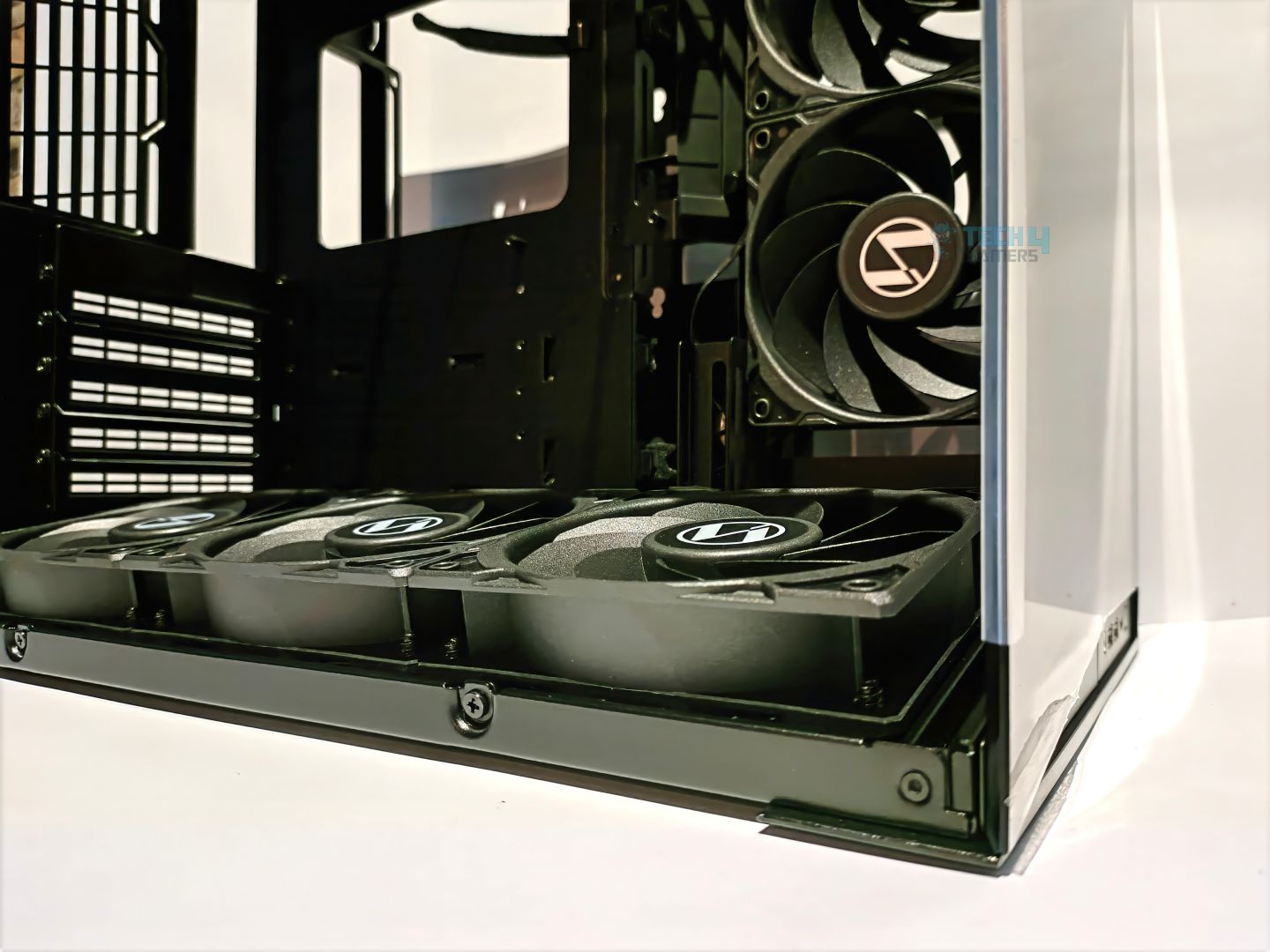
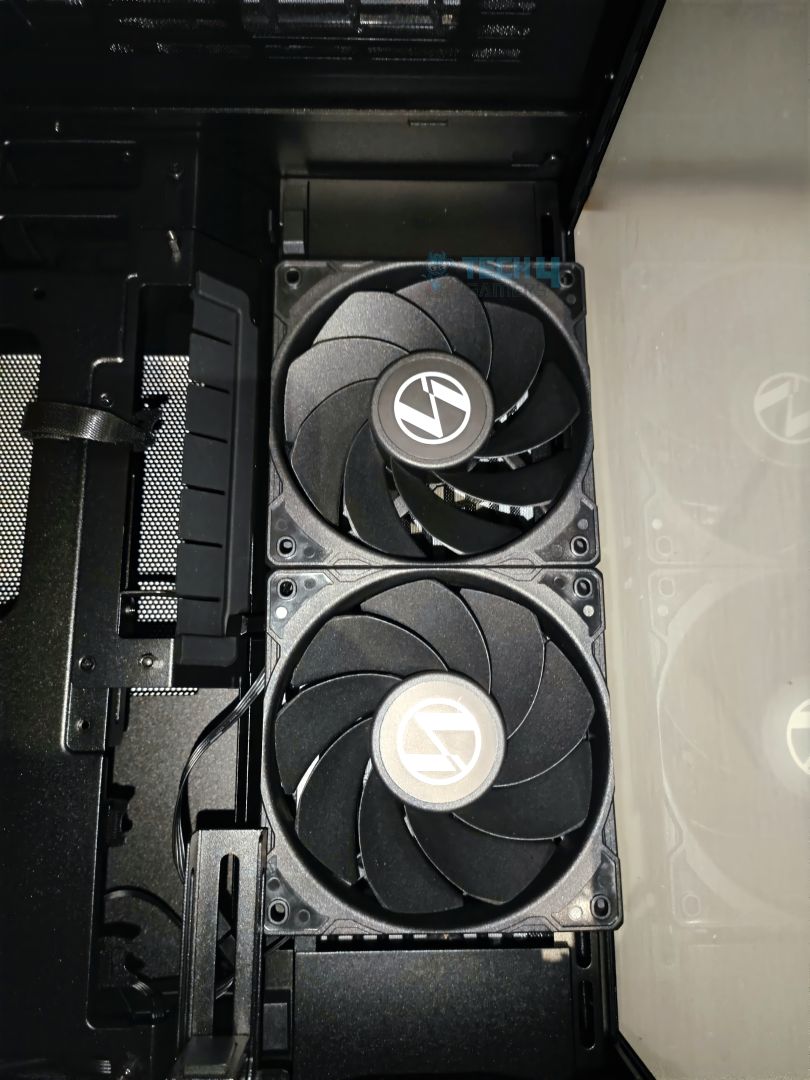
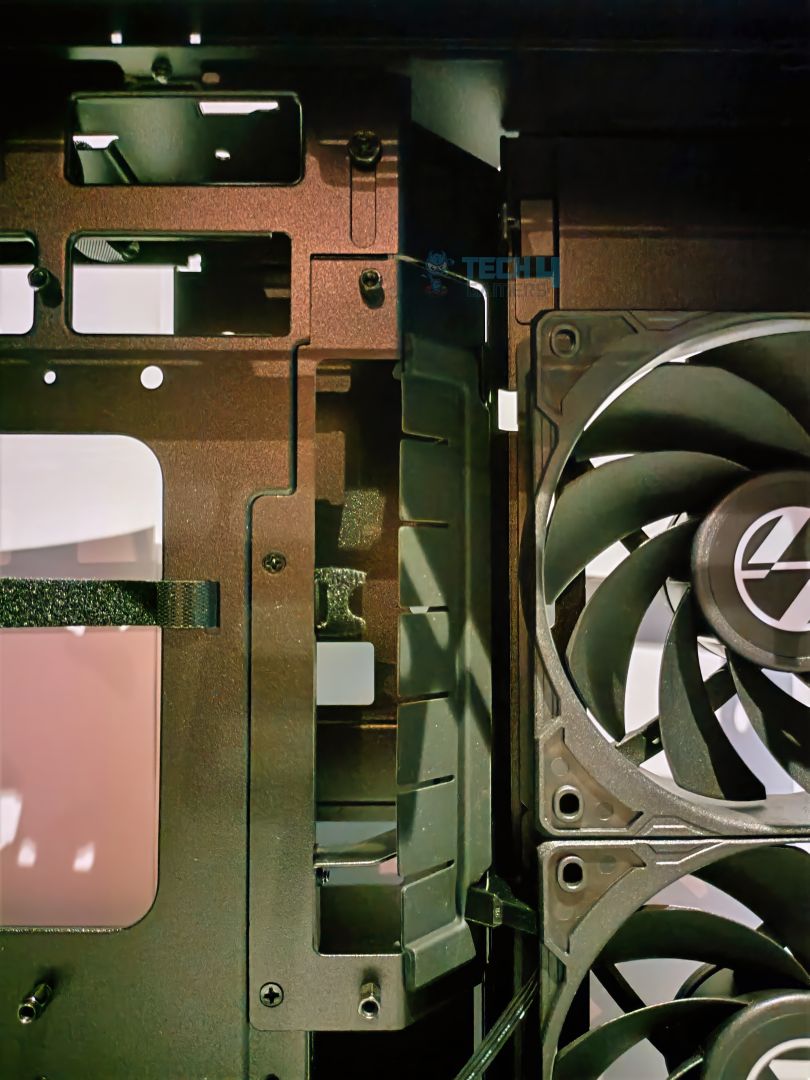
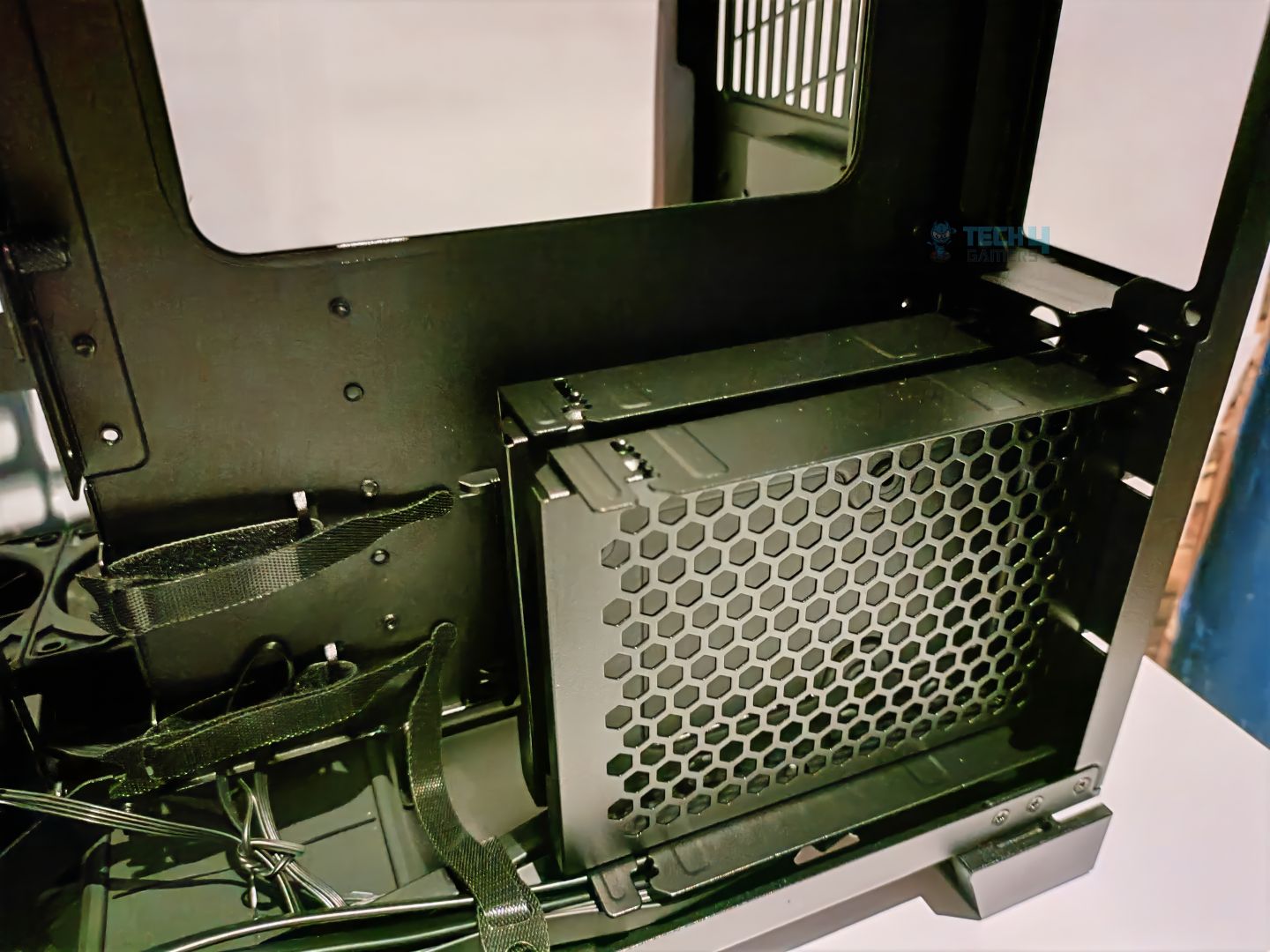
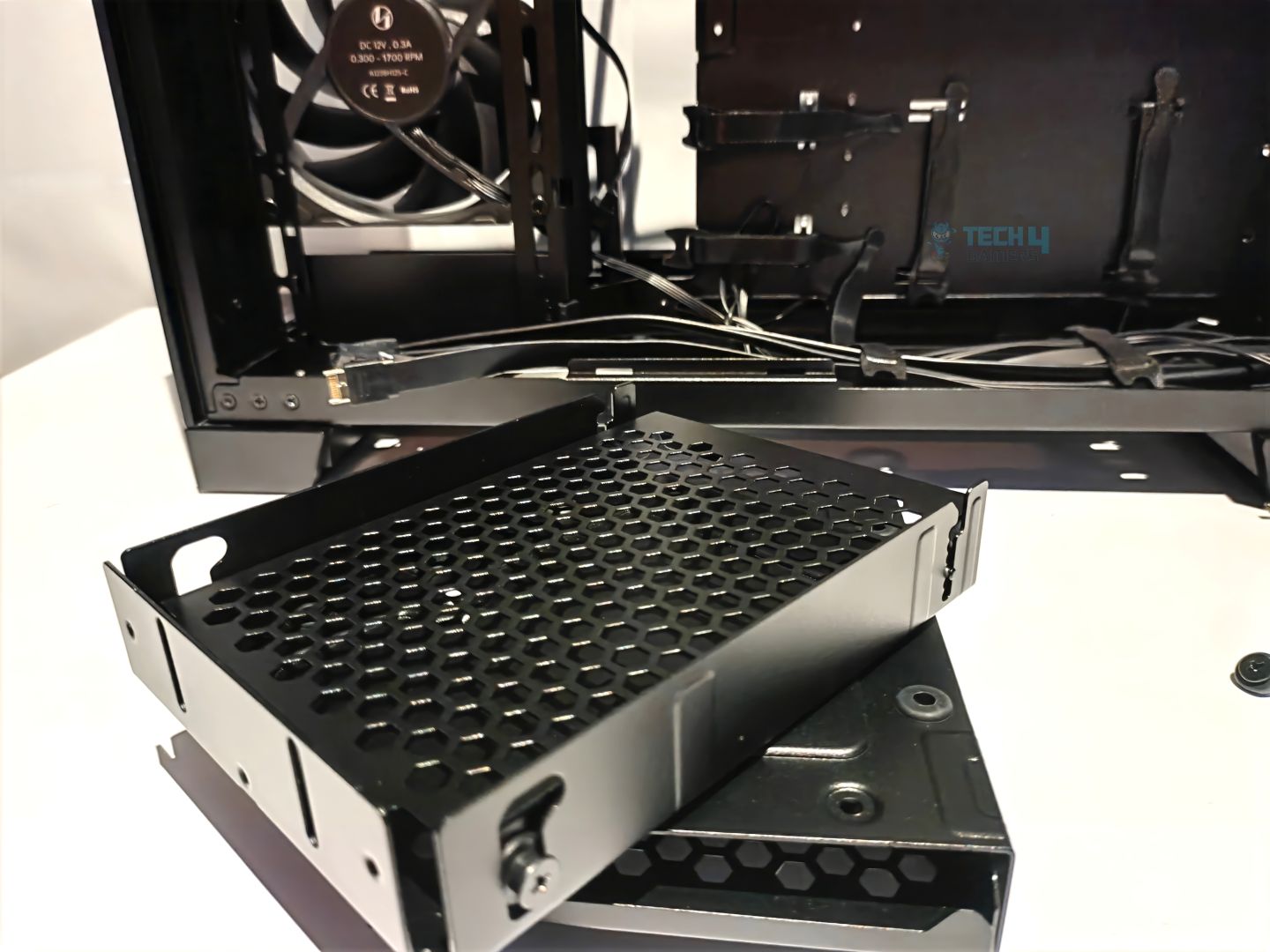
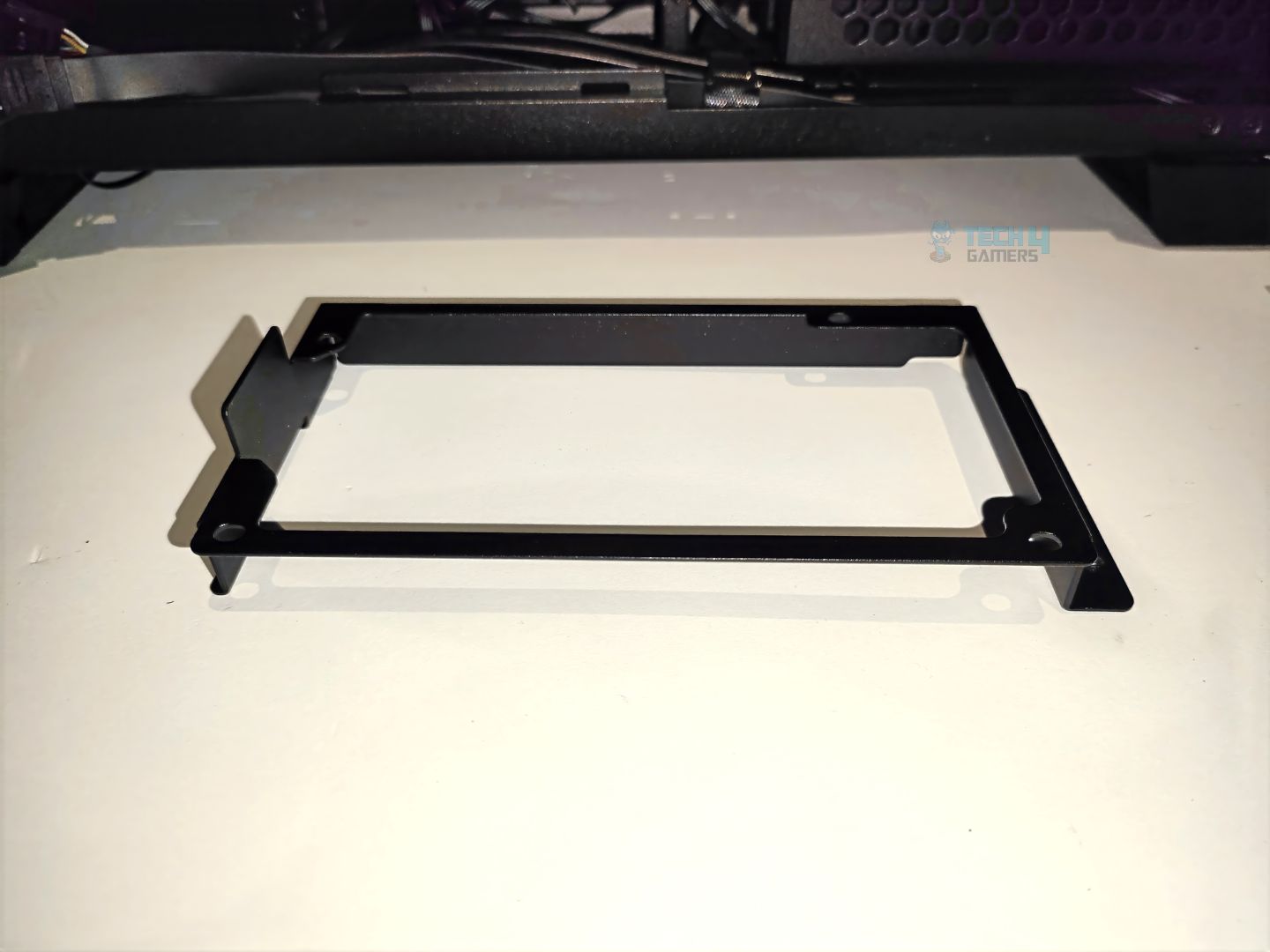
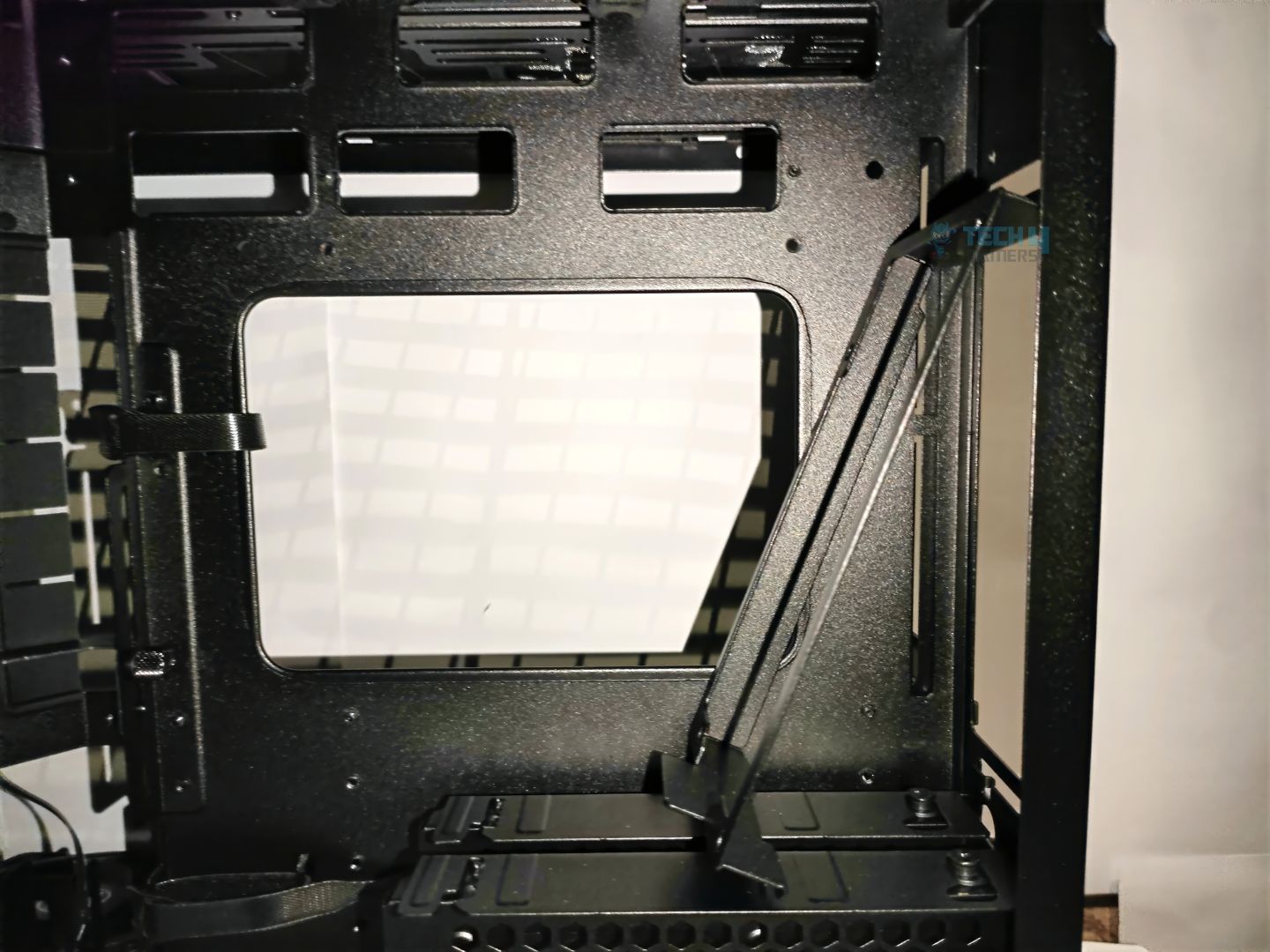
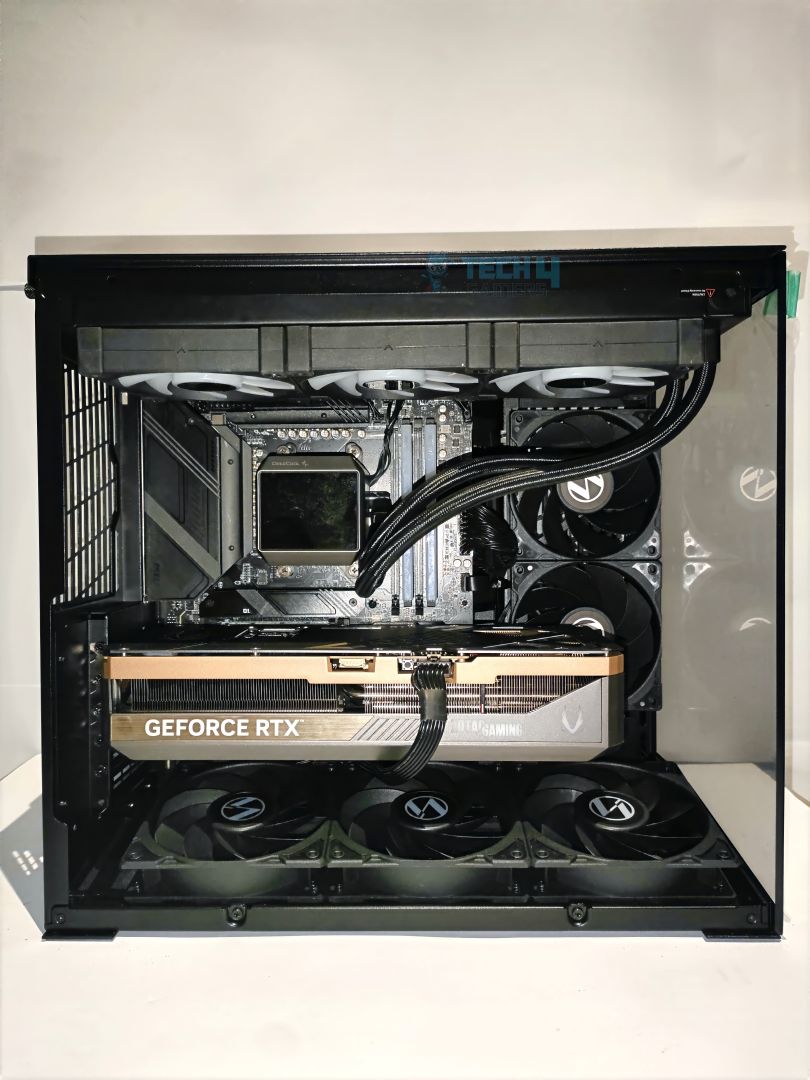
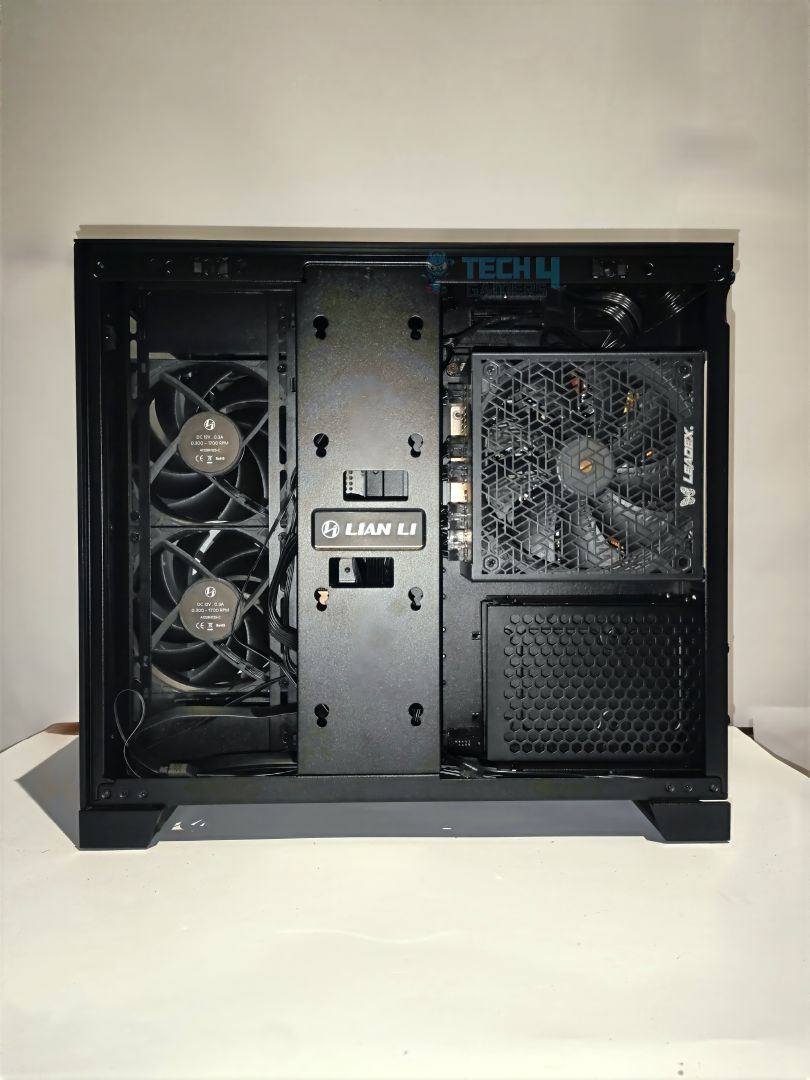
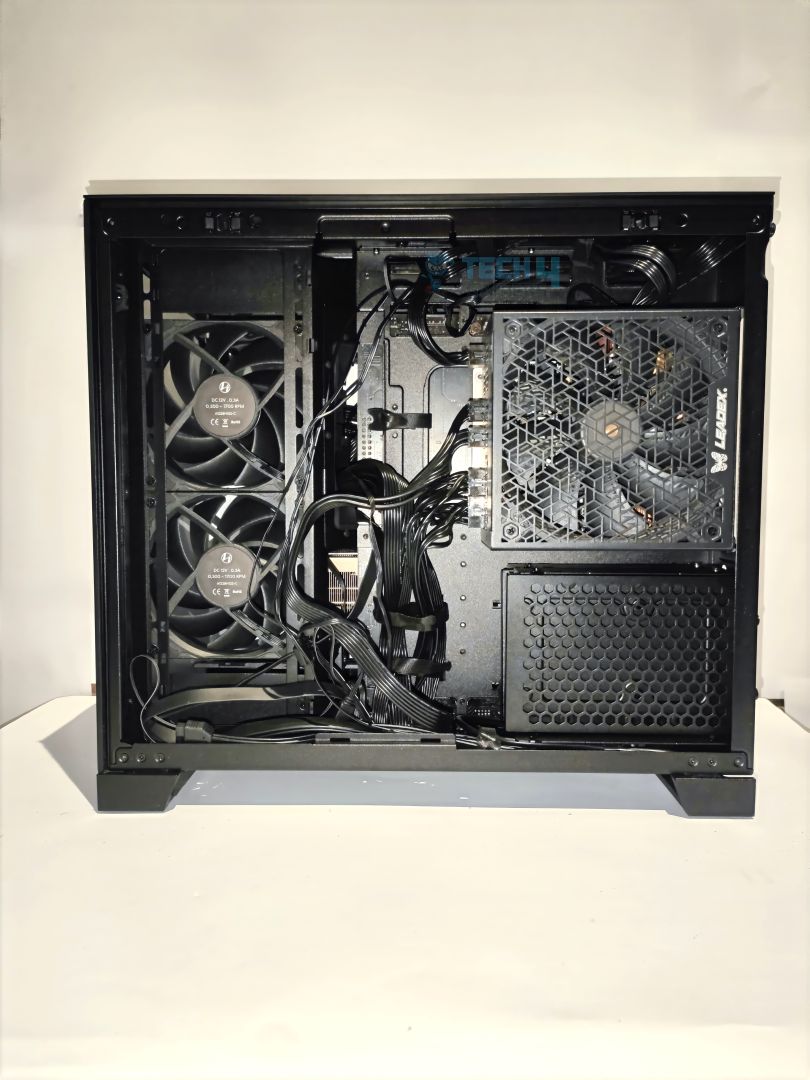
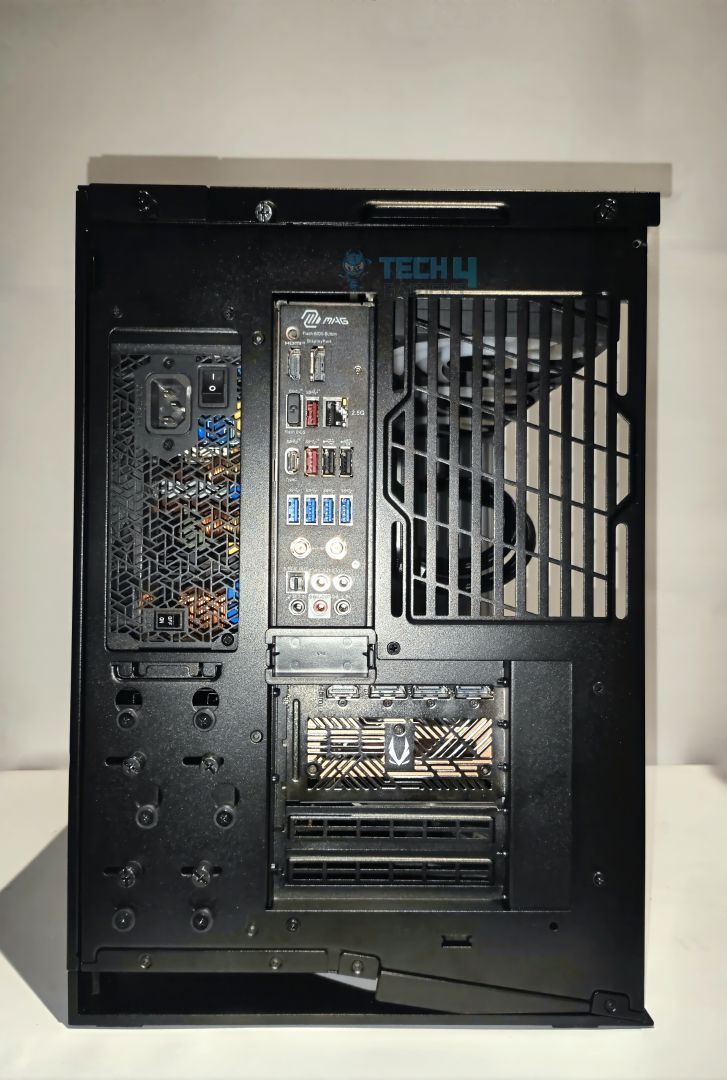
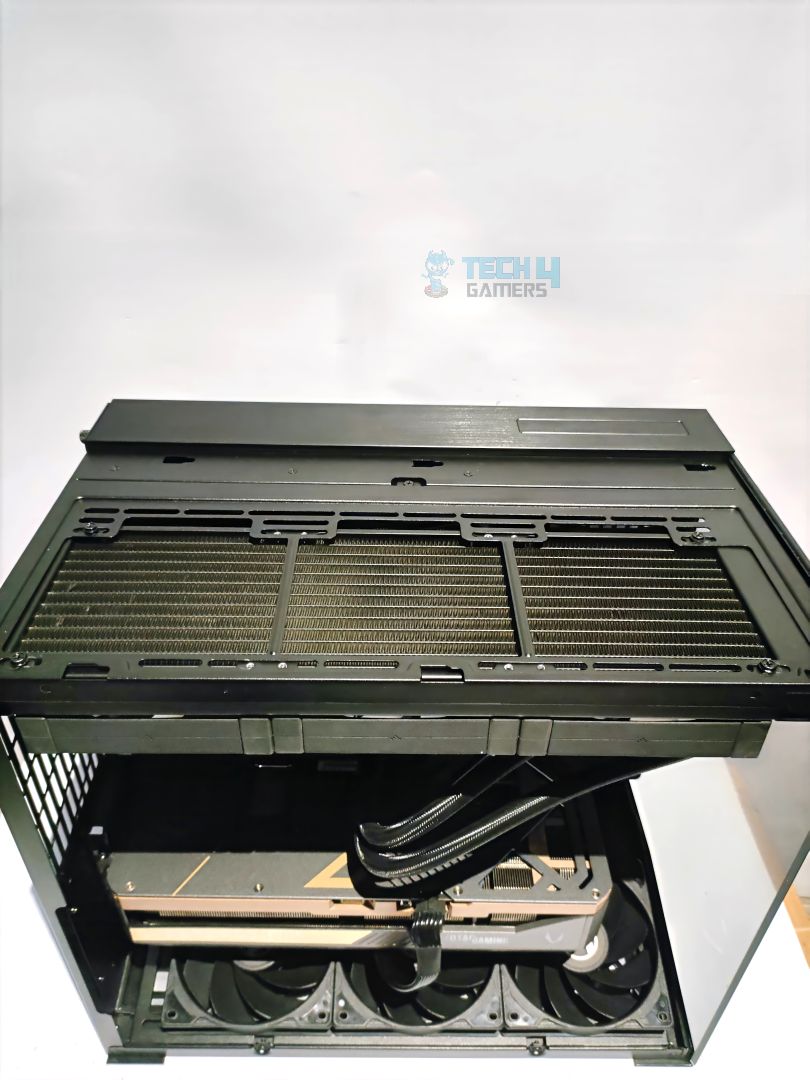
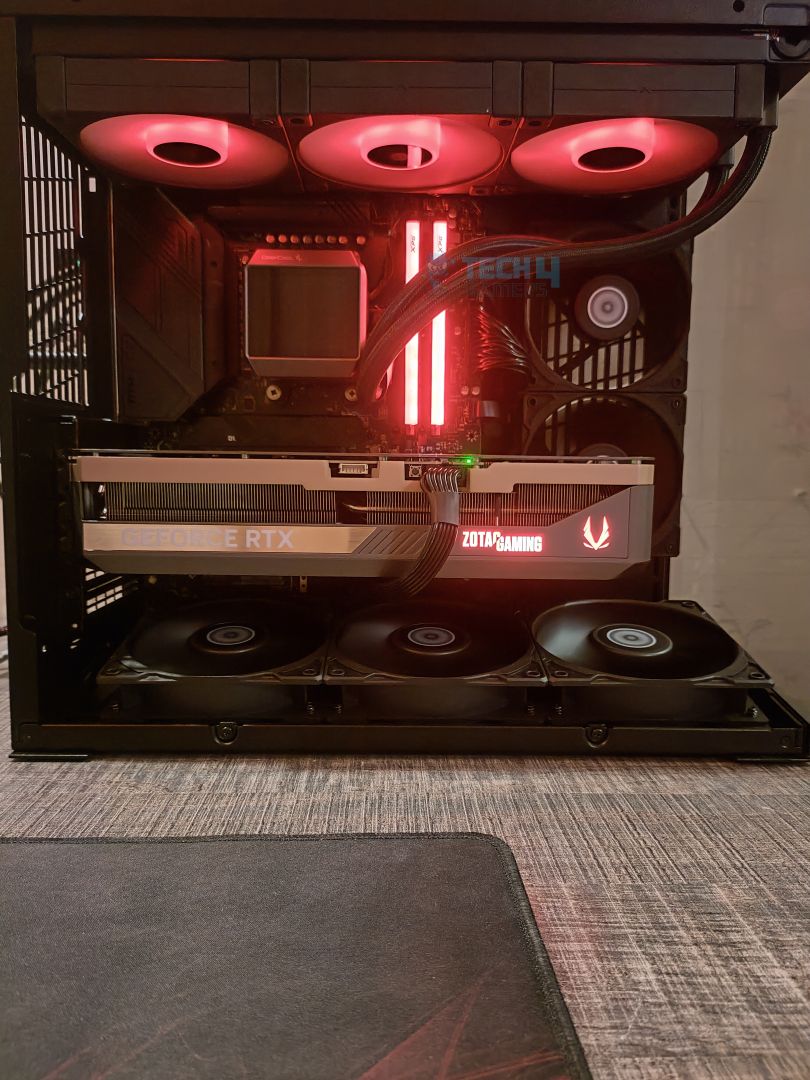
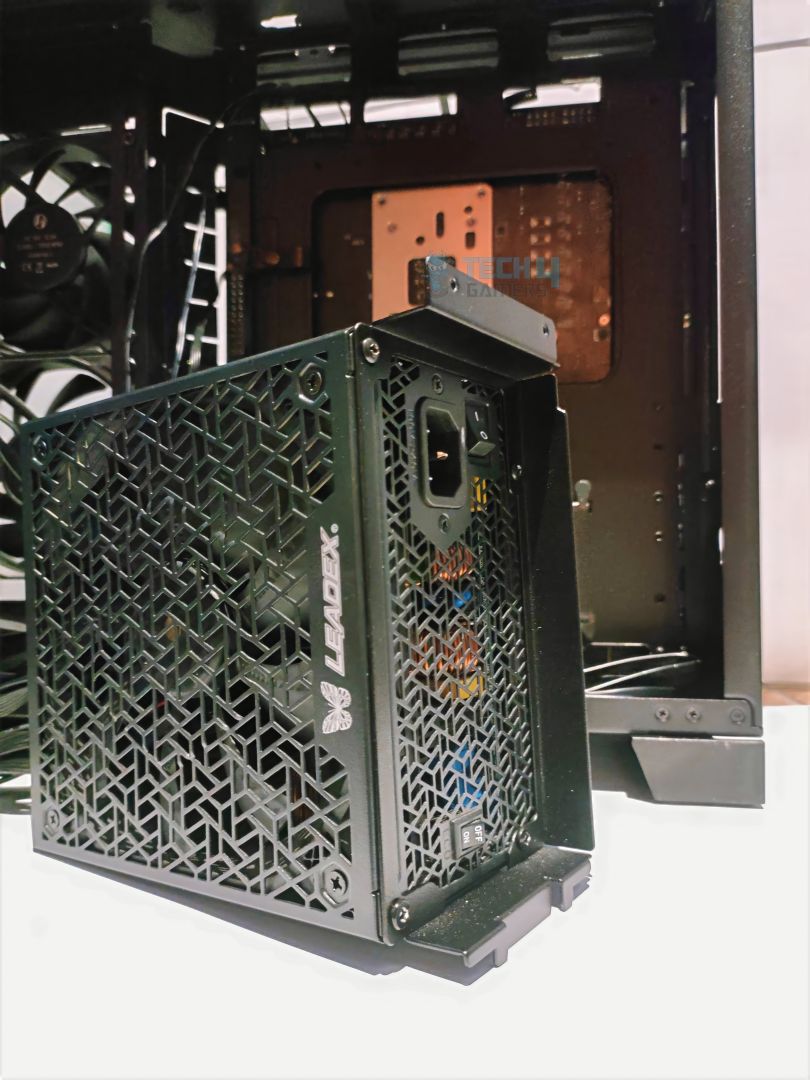

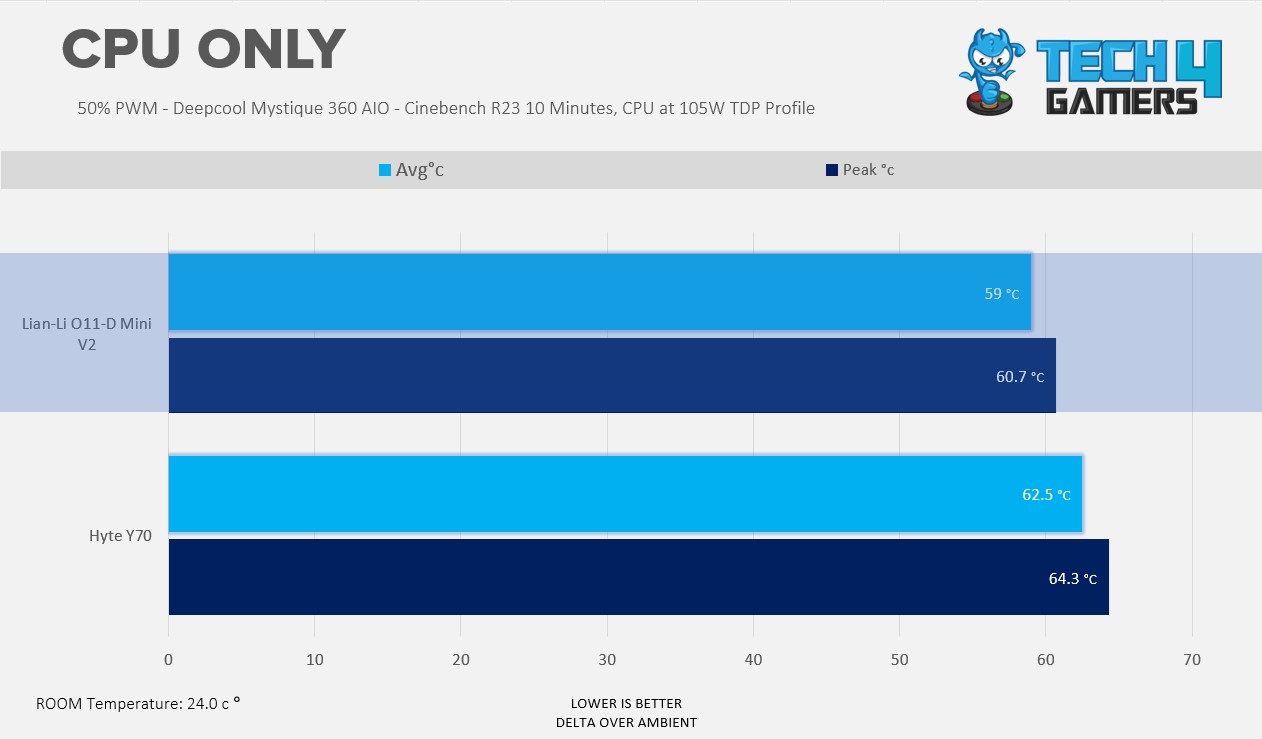
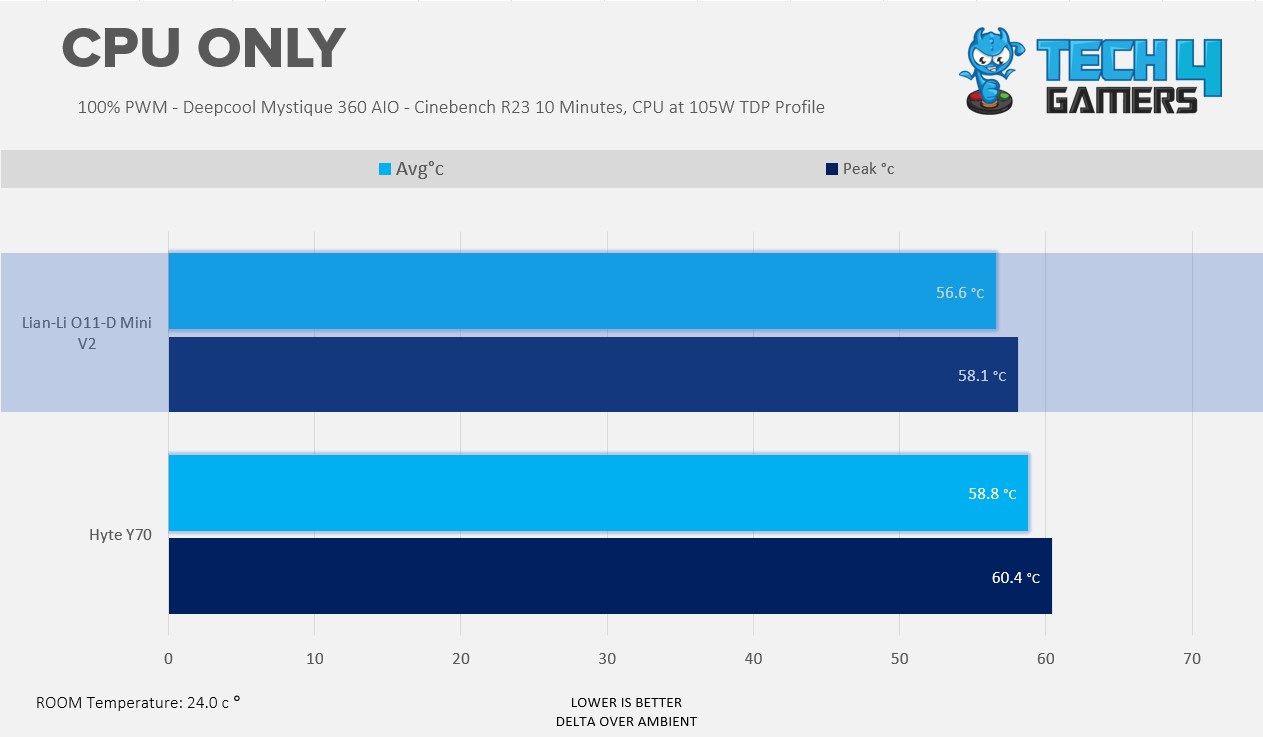
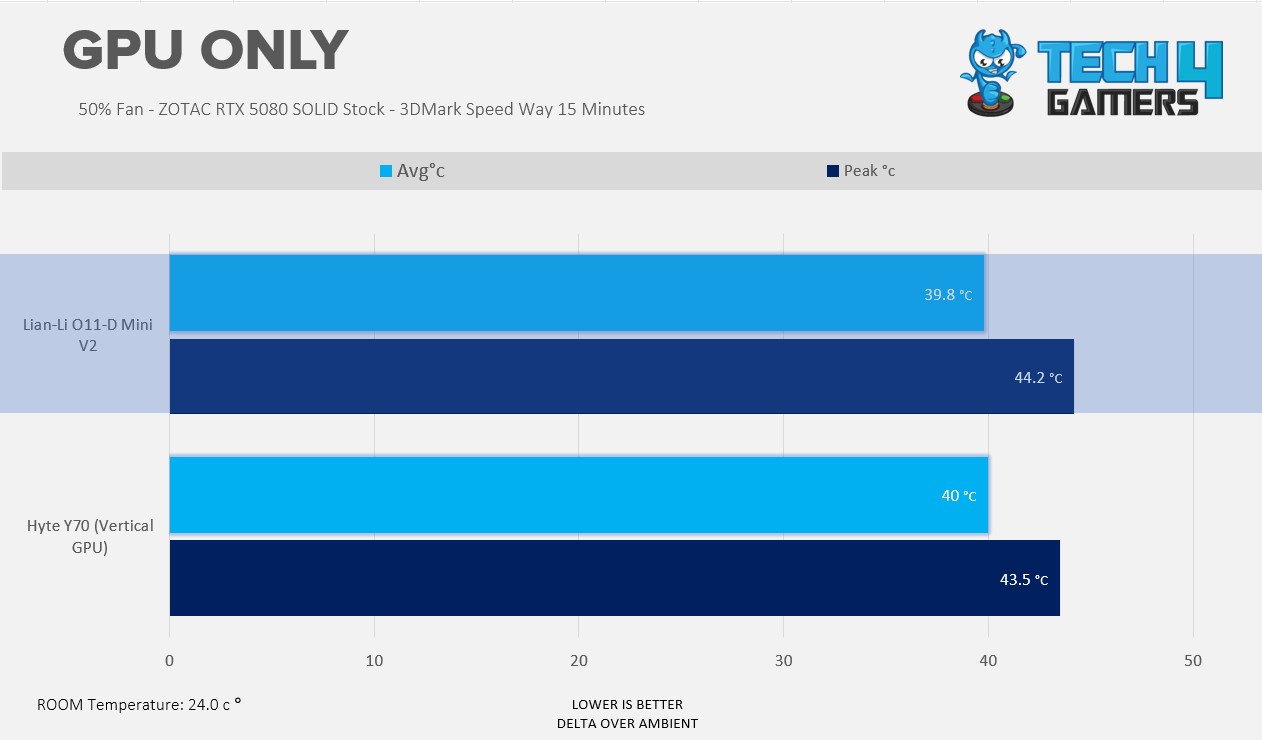
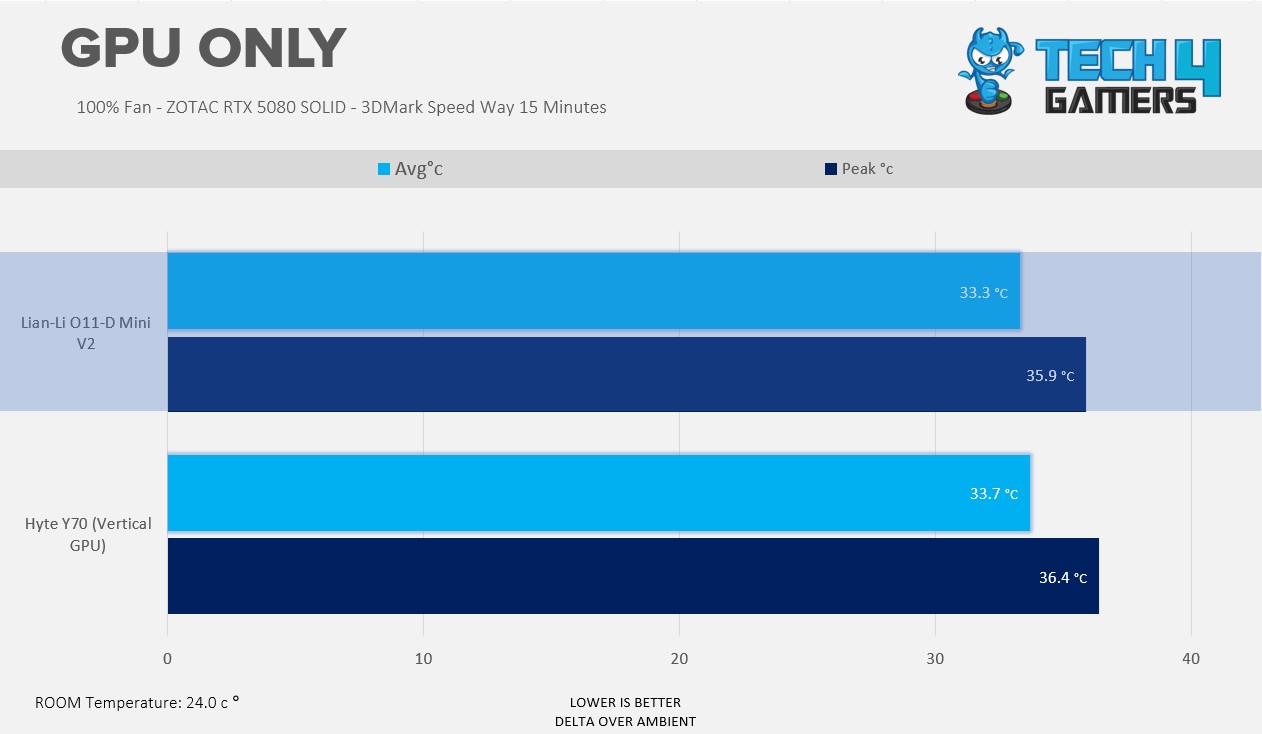

![6 Best White PC Cases [Top Cooling] Best White PC Case](https://tech4gamers.com/wp-content/uploads/2022/05/Best-White-PC-Case-218x150.jpg)
![Antec Earthwatts 650W Review [Testings + Unboxing] antec earthwatts 650w review](https://tech4gamers.com/wp-content/uploads/2019/07/antec-earthwatts-650w-review-218x150.jpg)

![Antec VP500PC Review [Expert’s Take] antec vp500pc review](https://tech4gamers.com/wp-content/uploads/2019/07/antec-vp500pc-review-1-218x150.jpg)